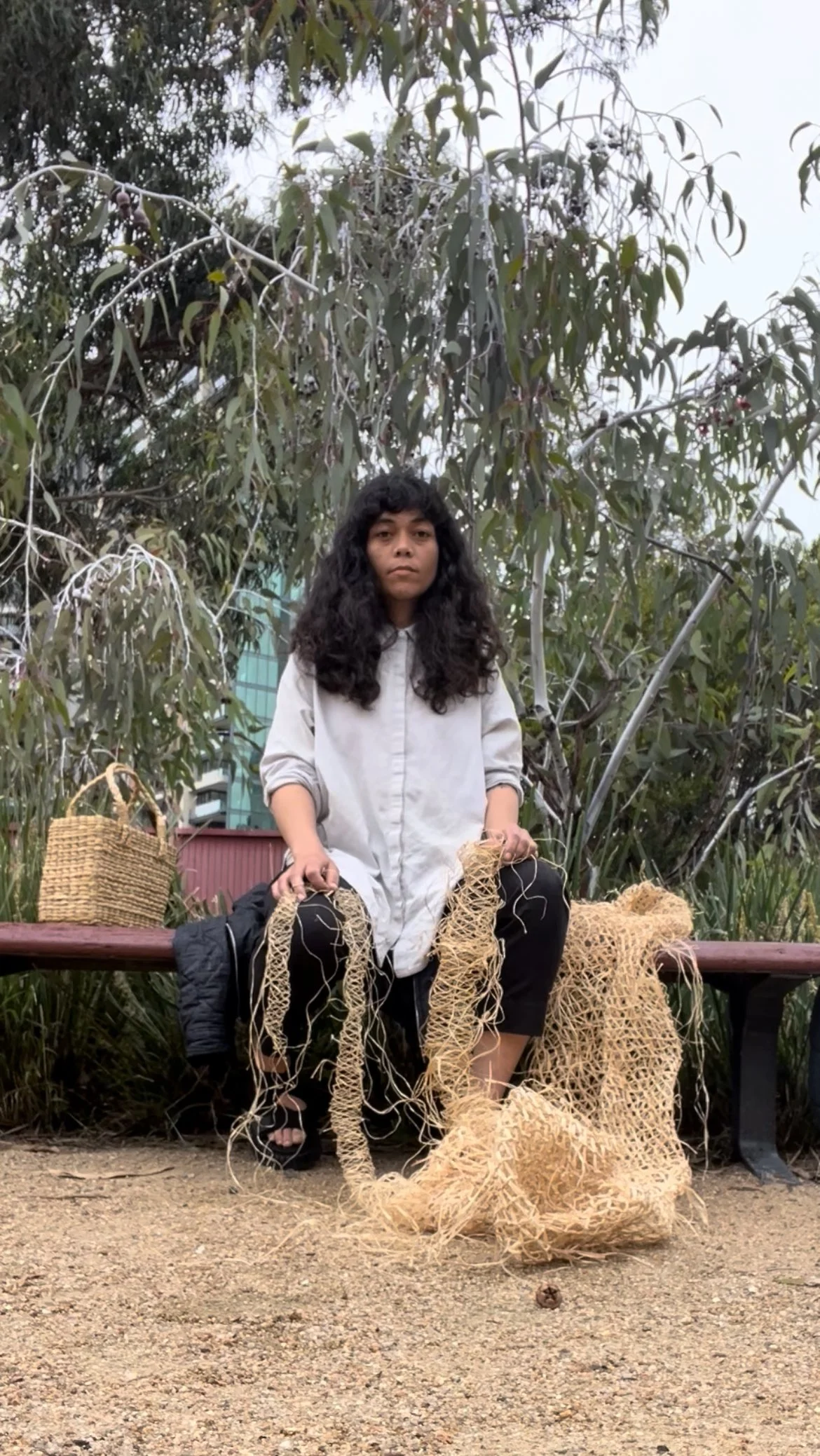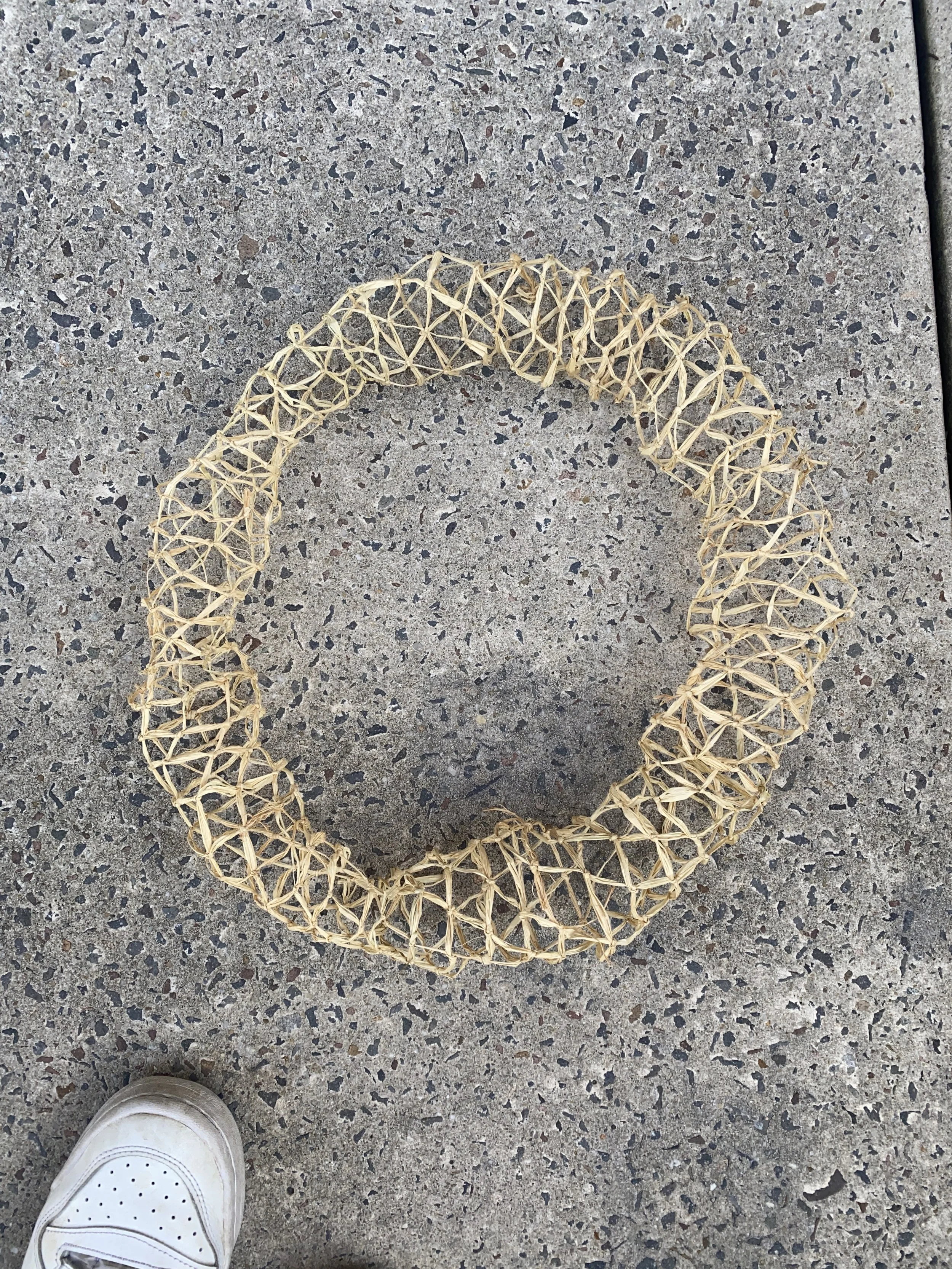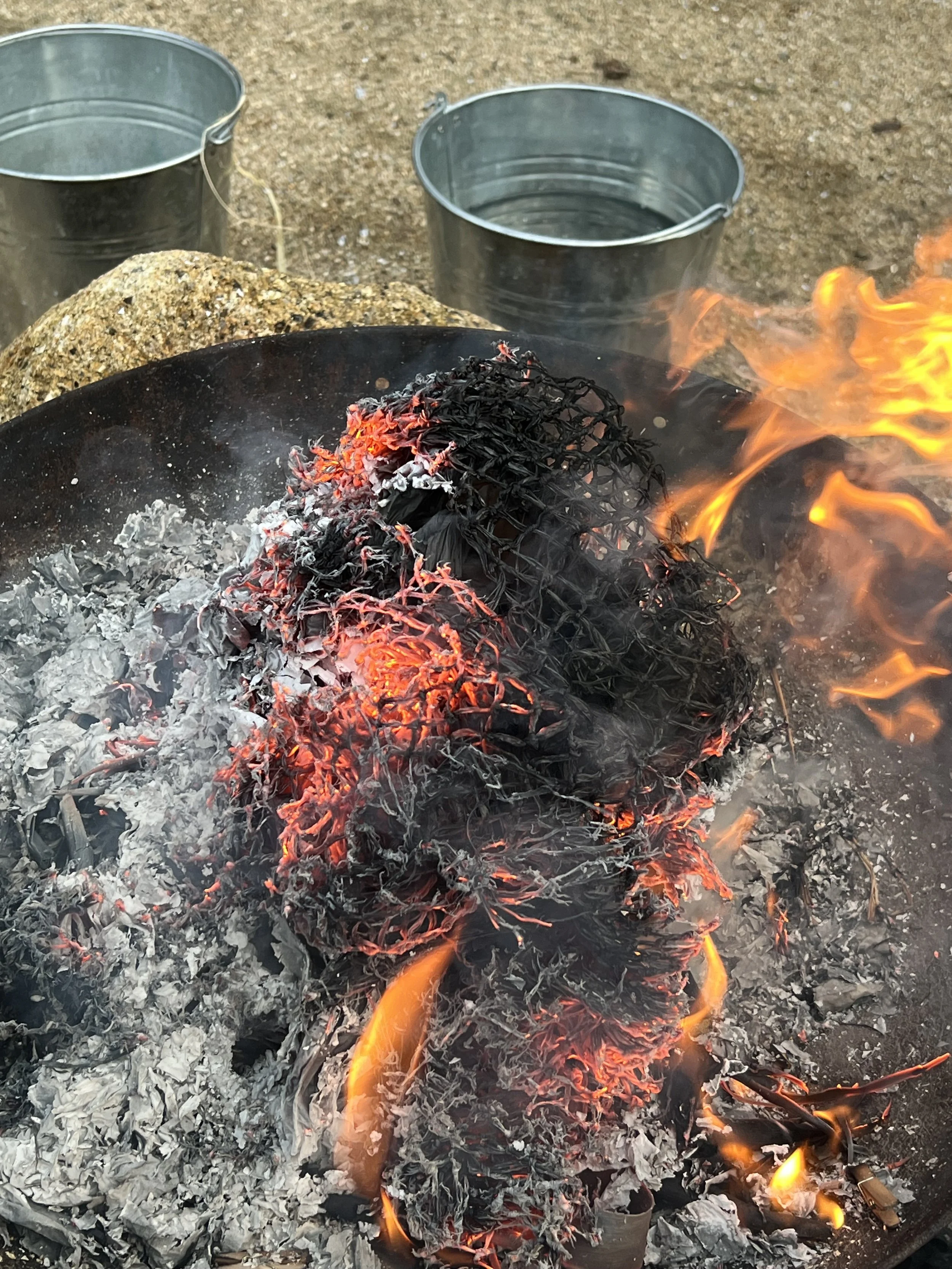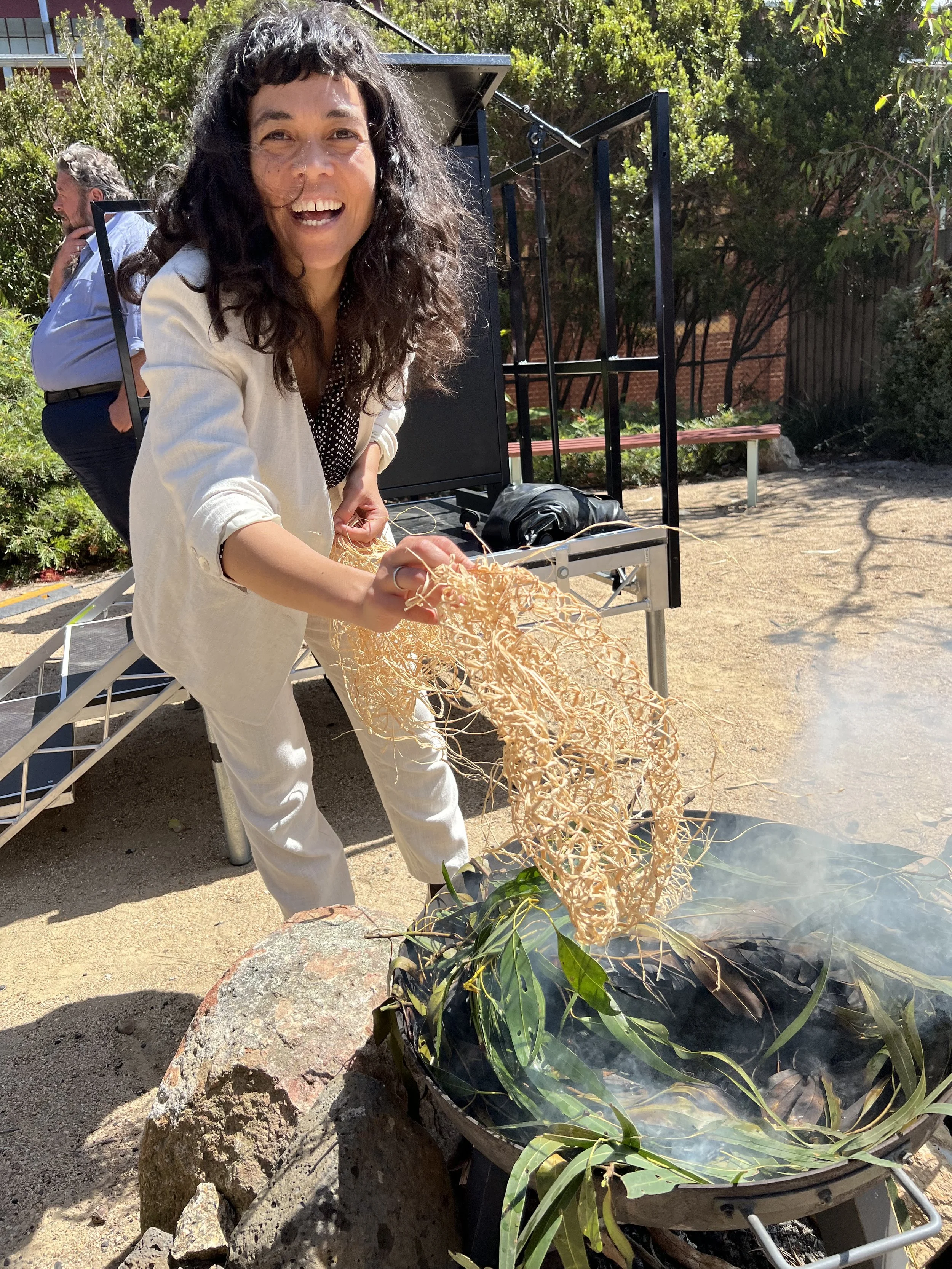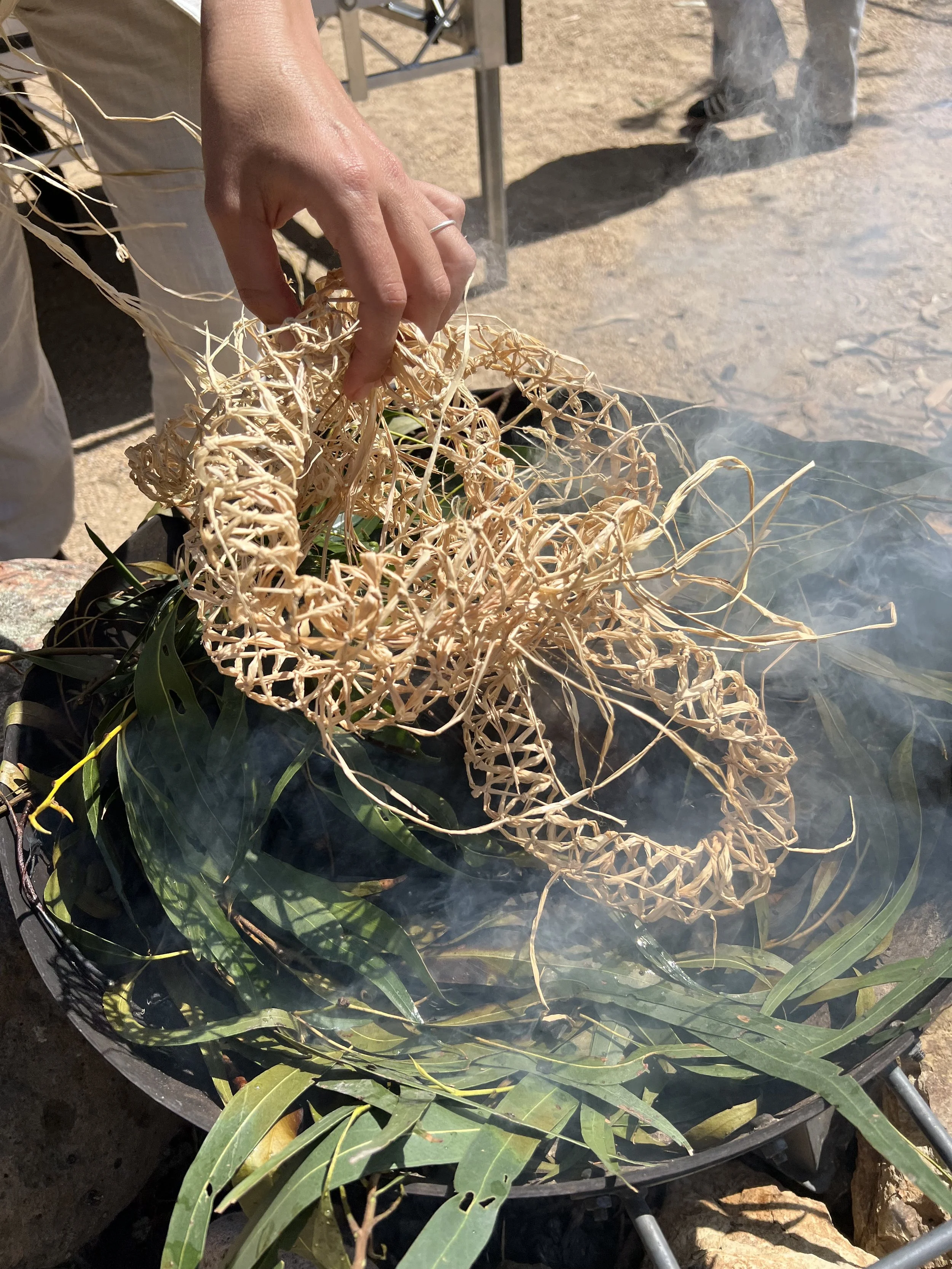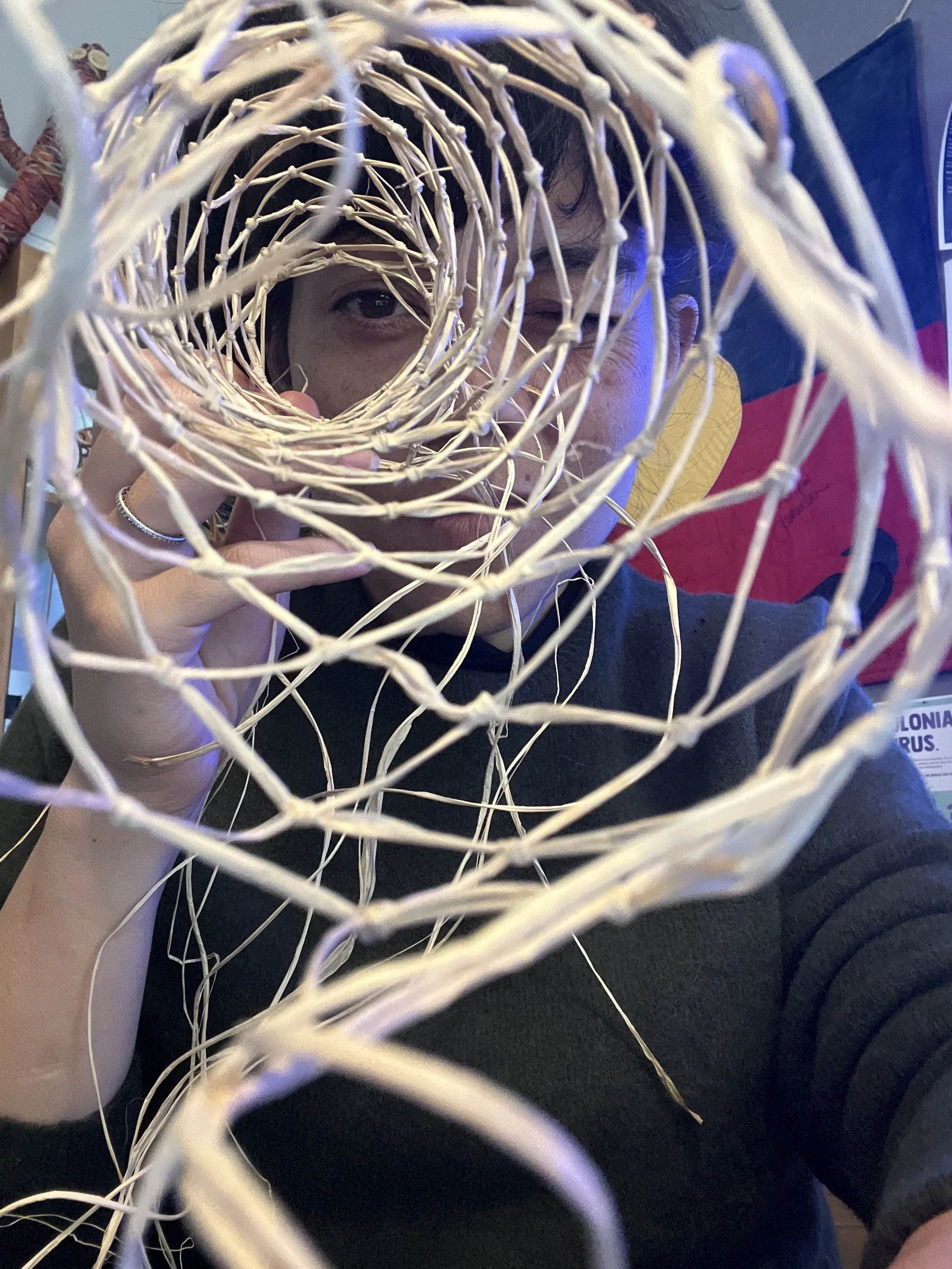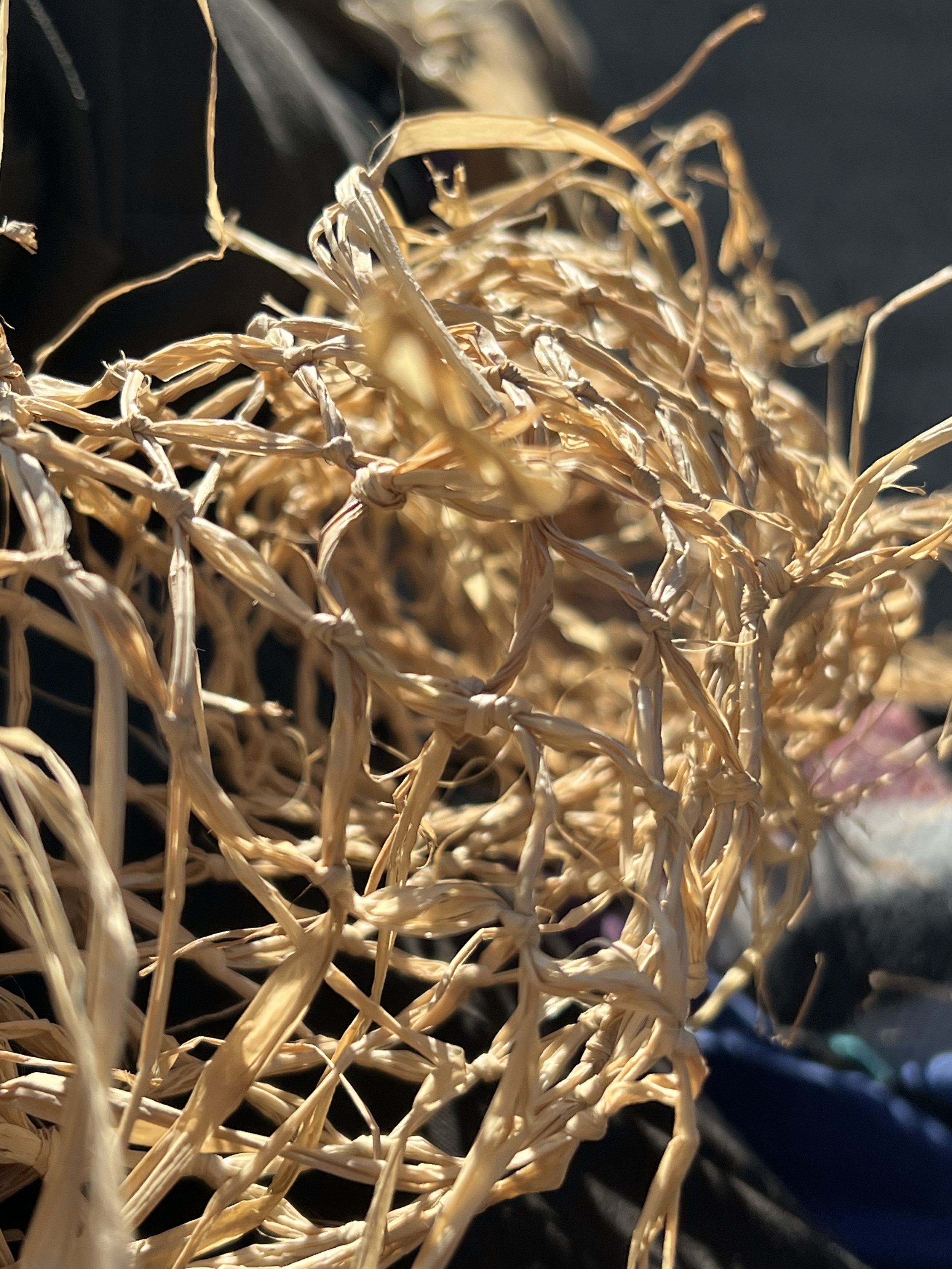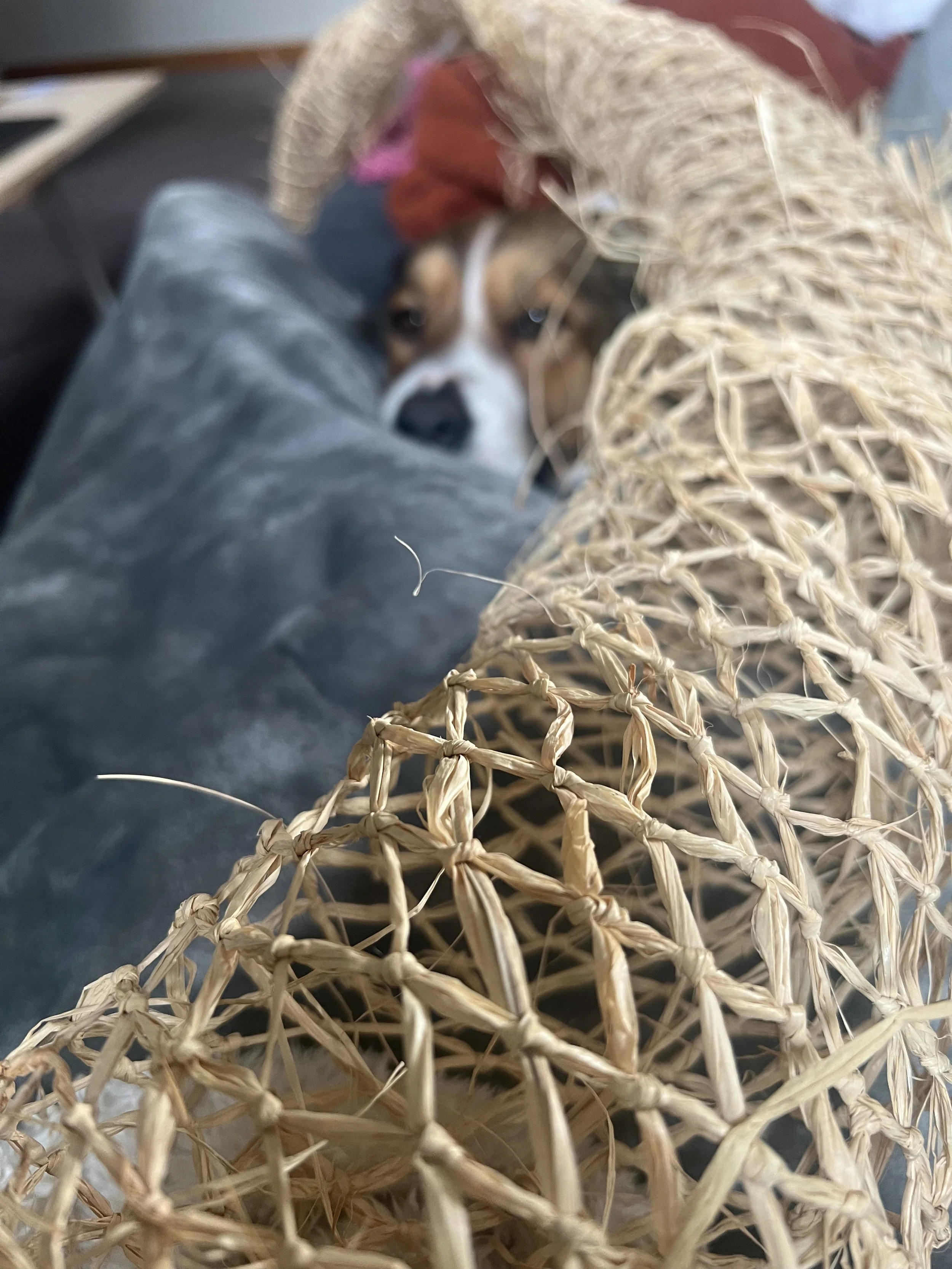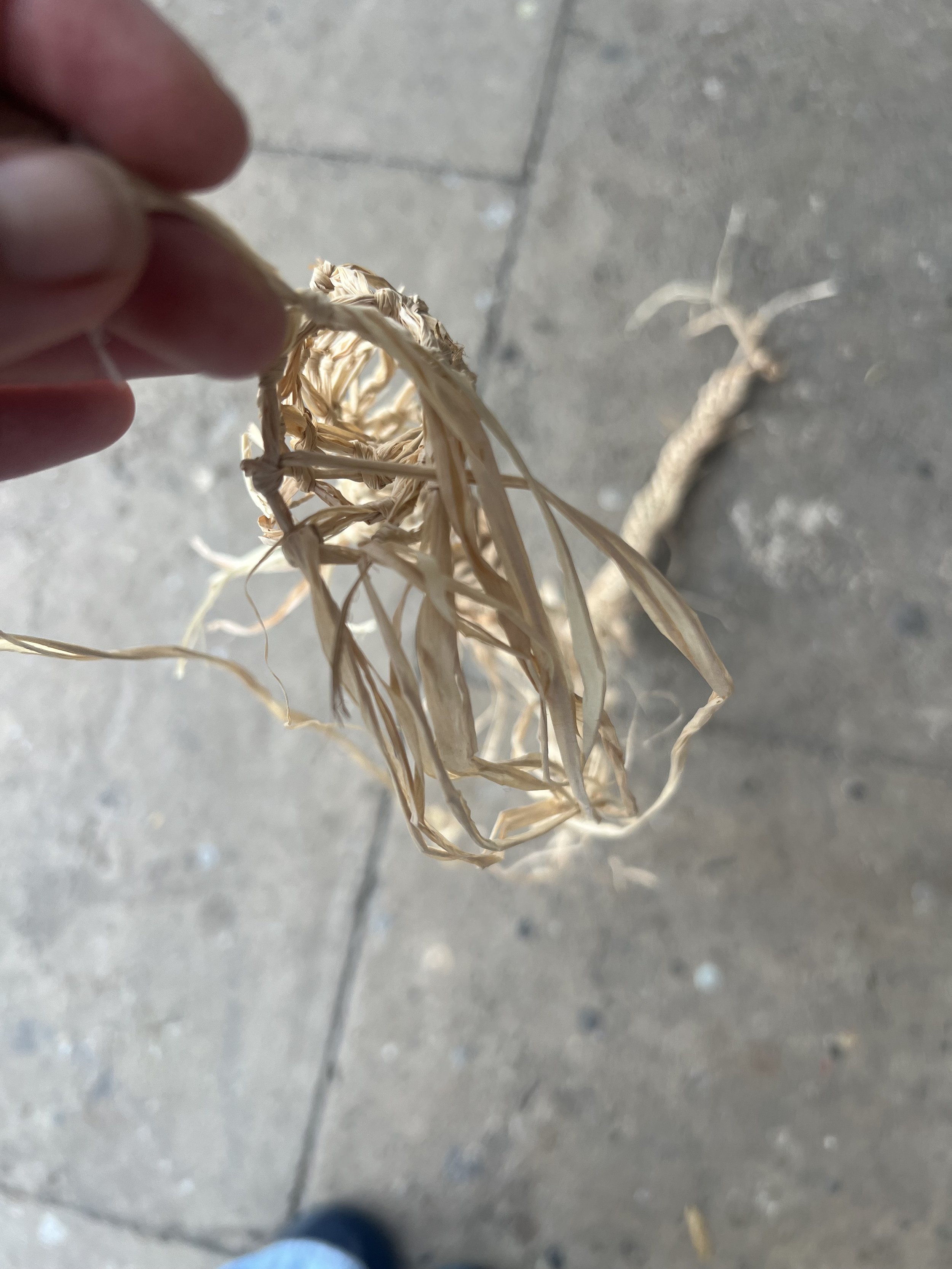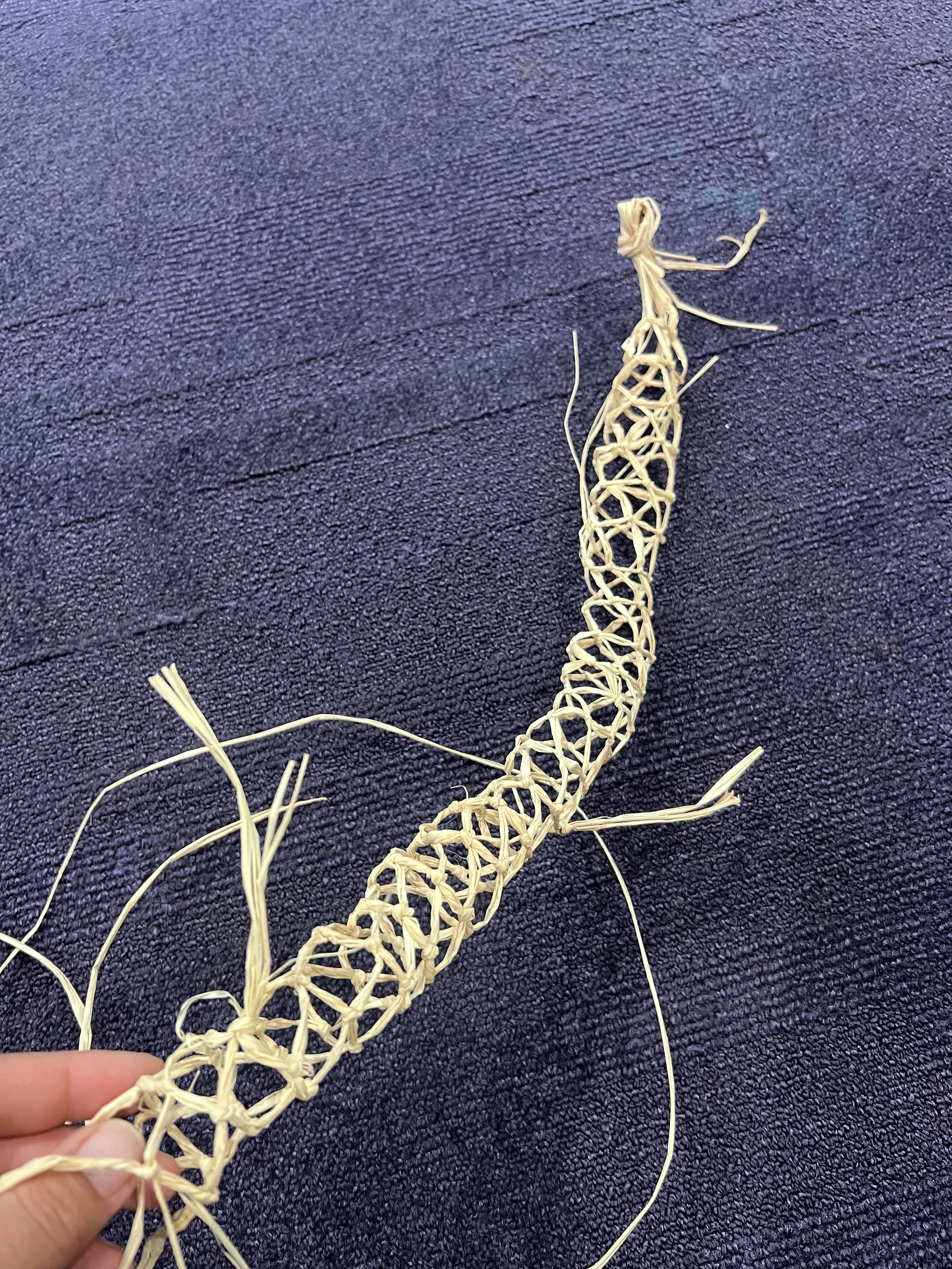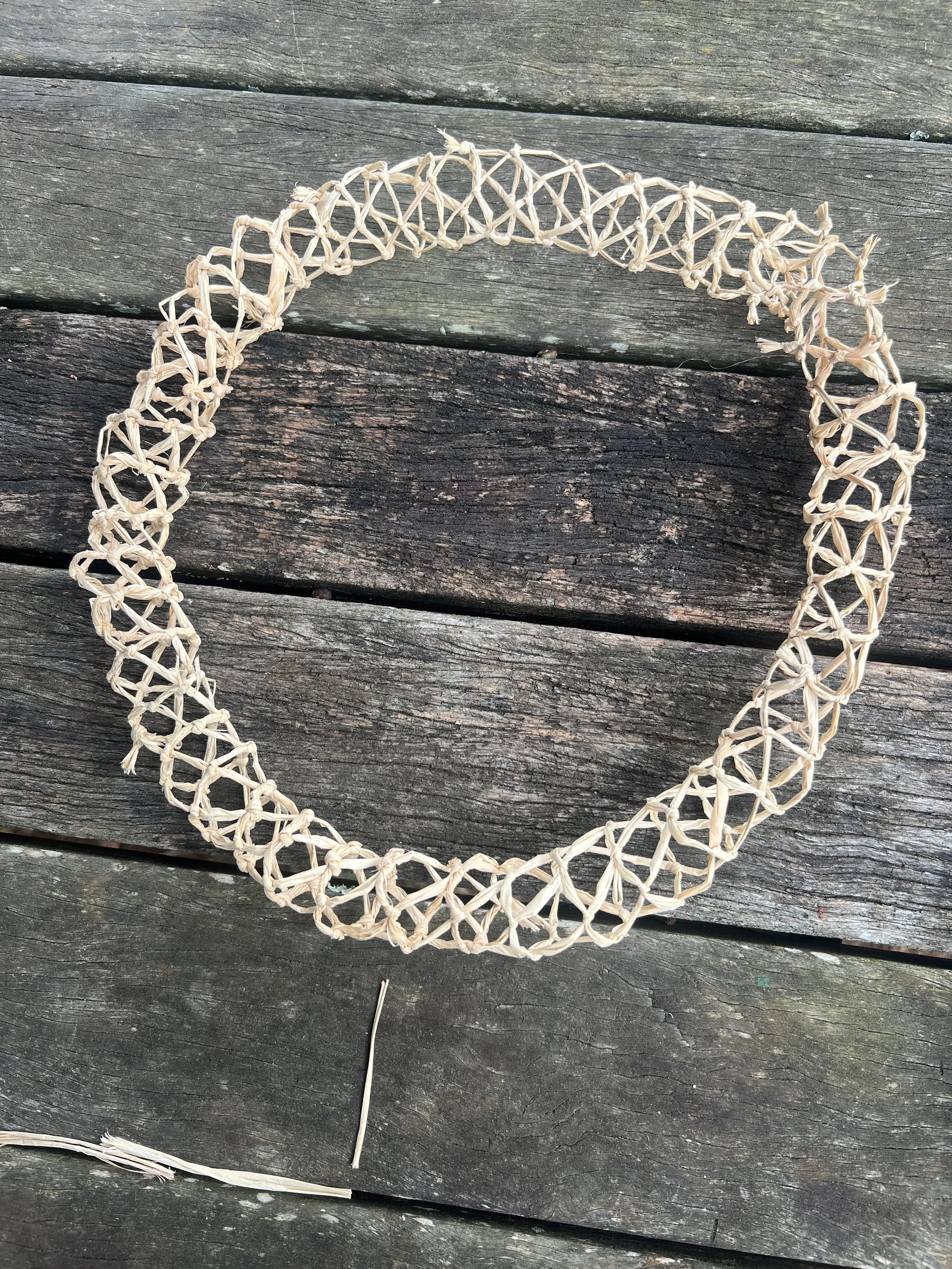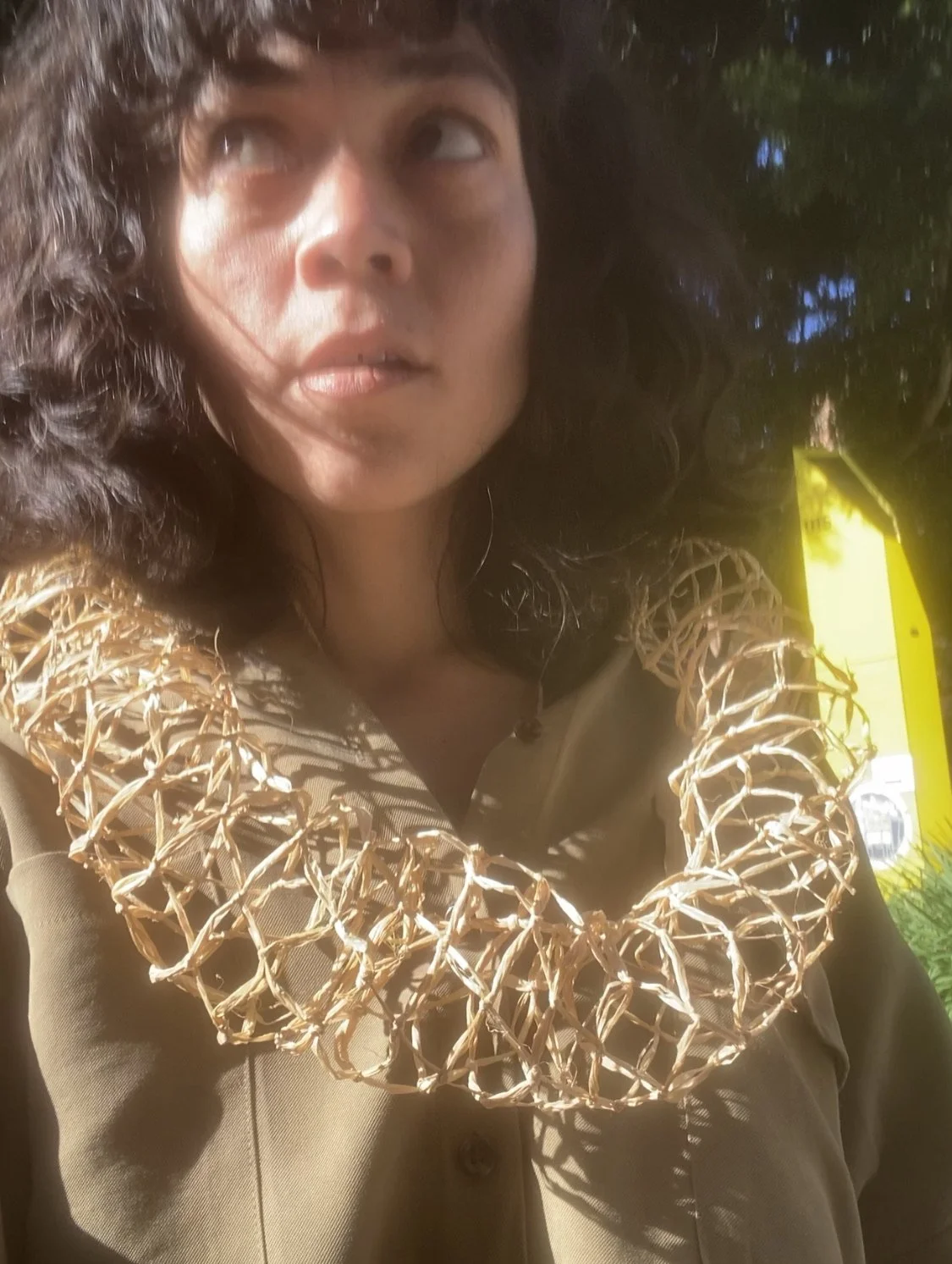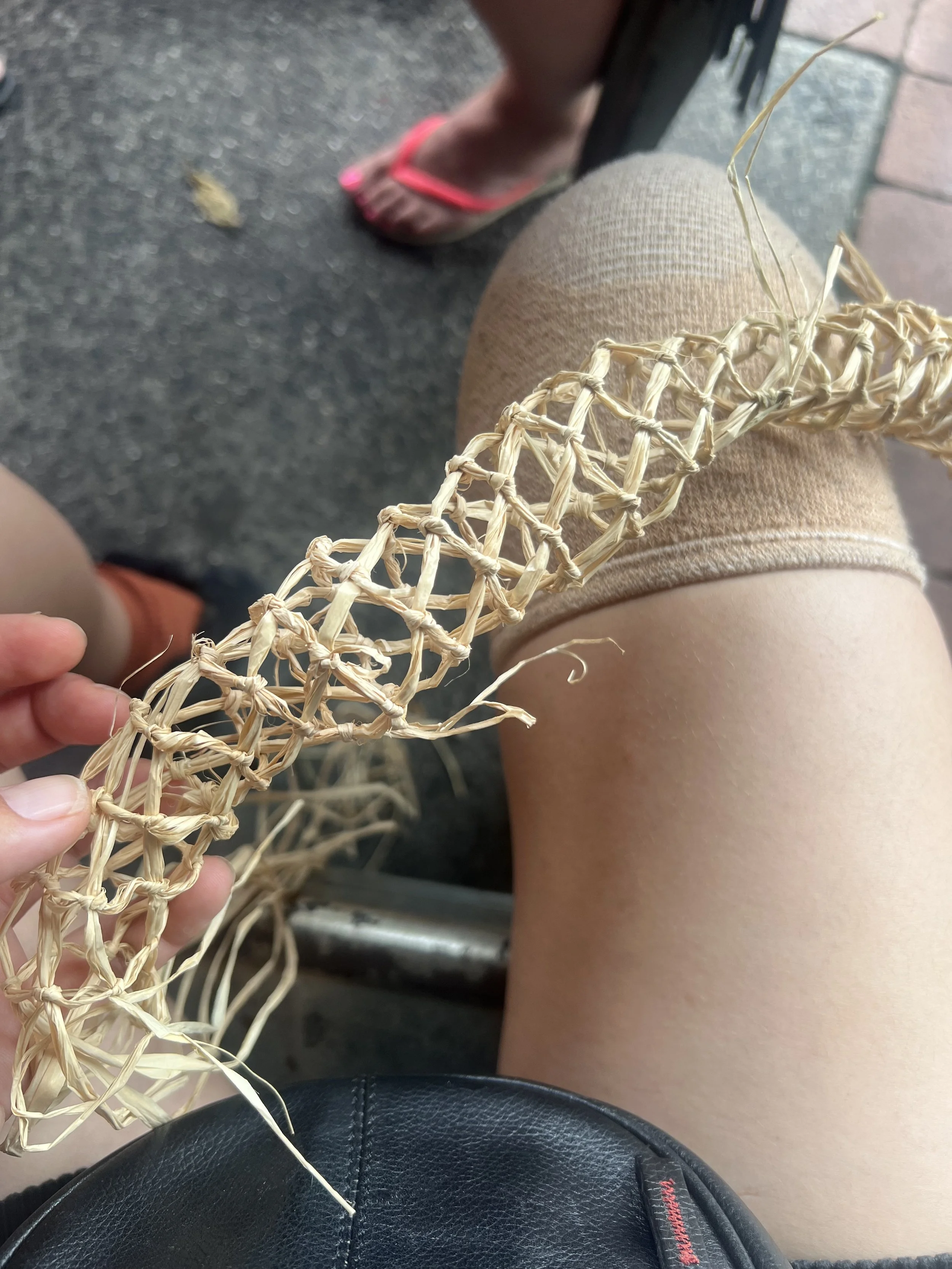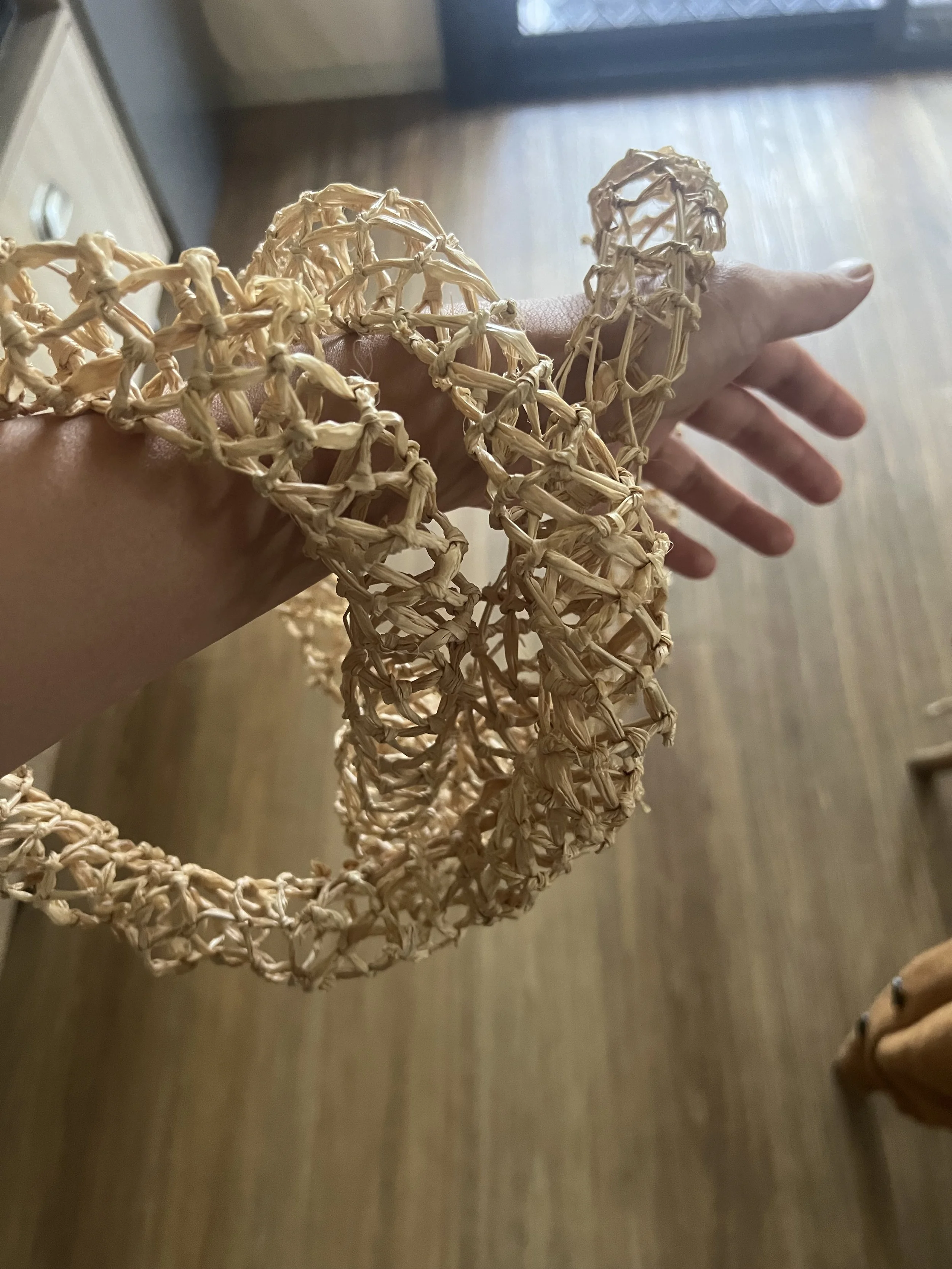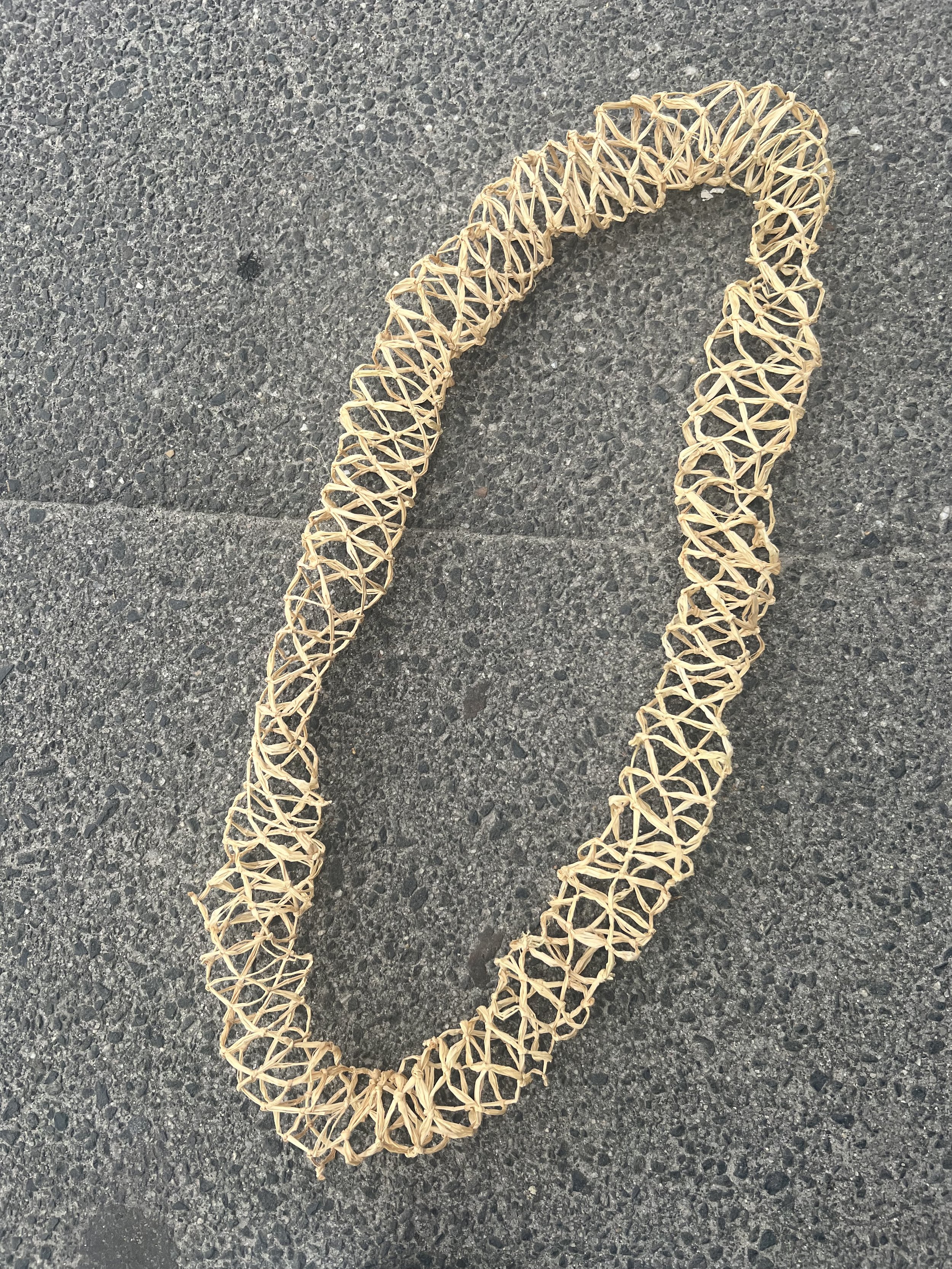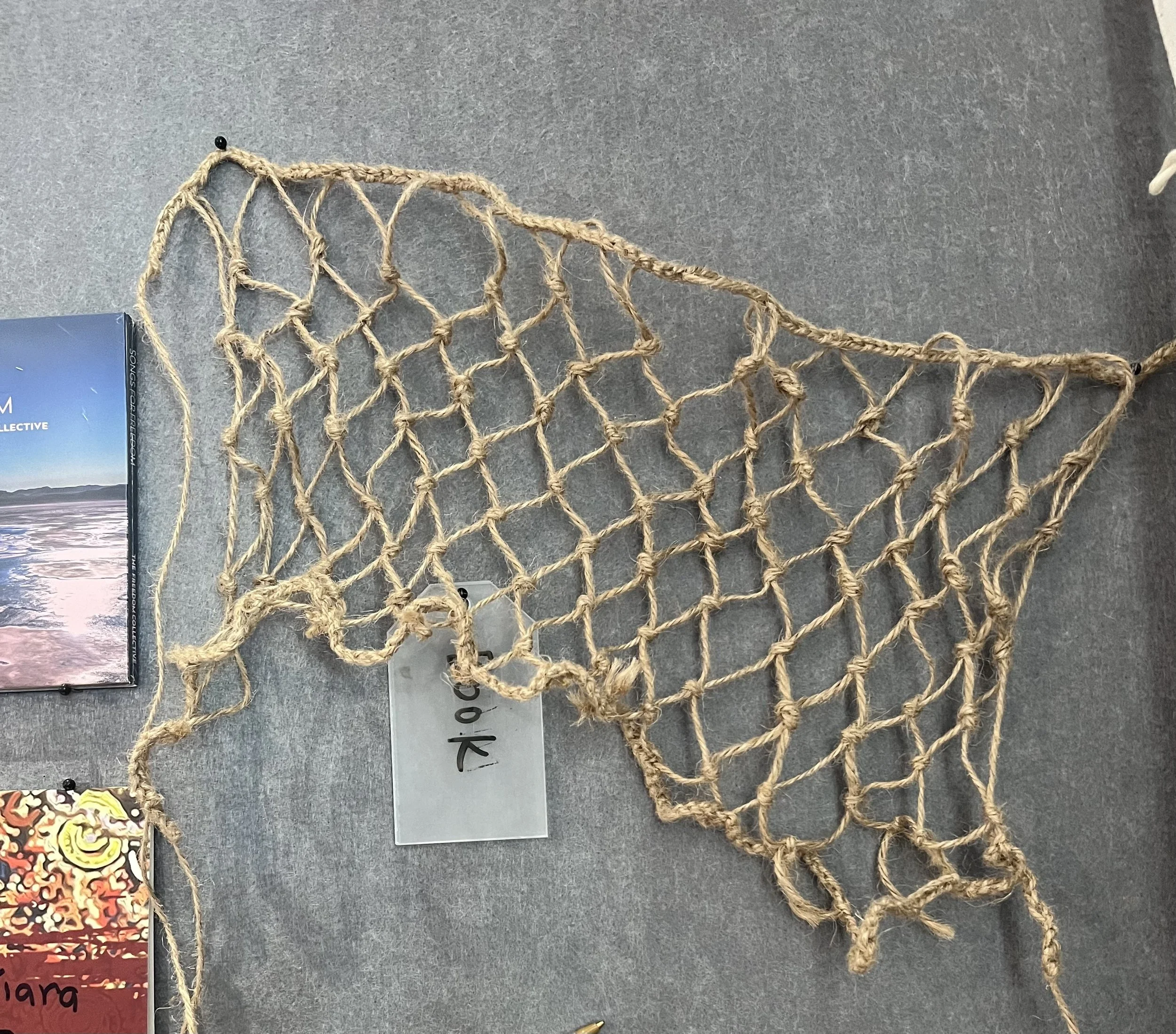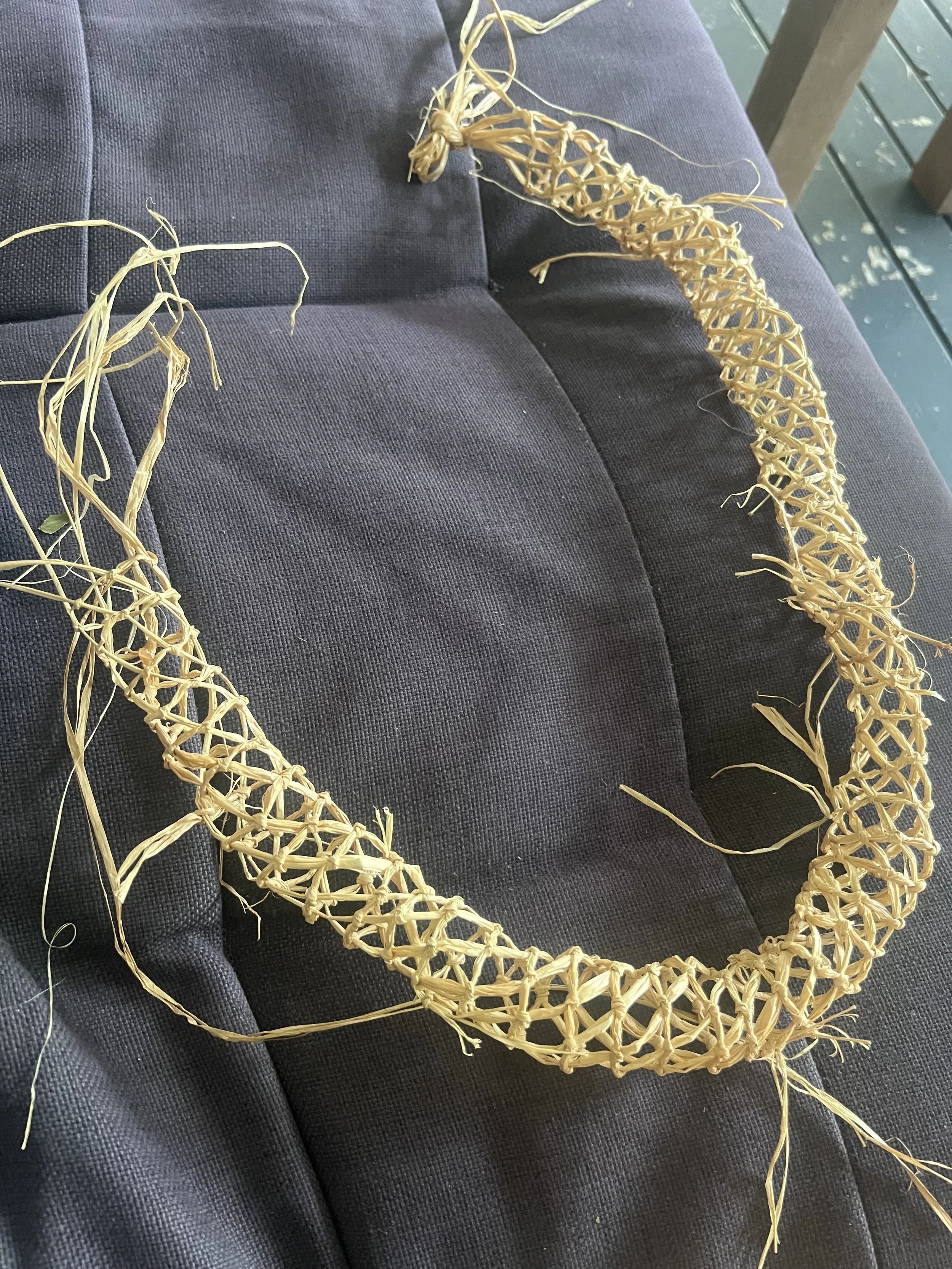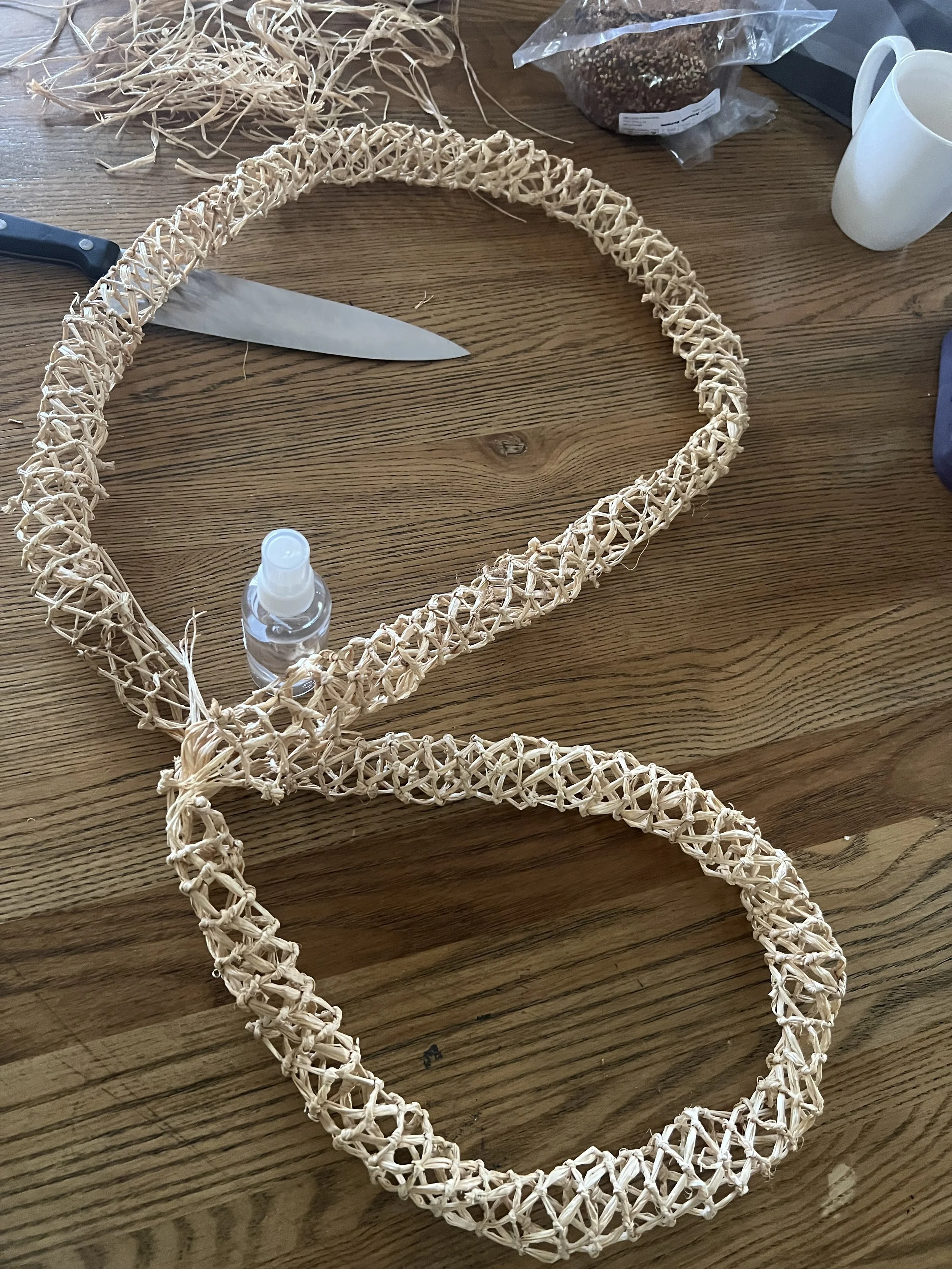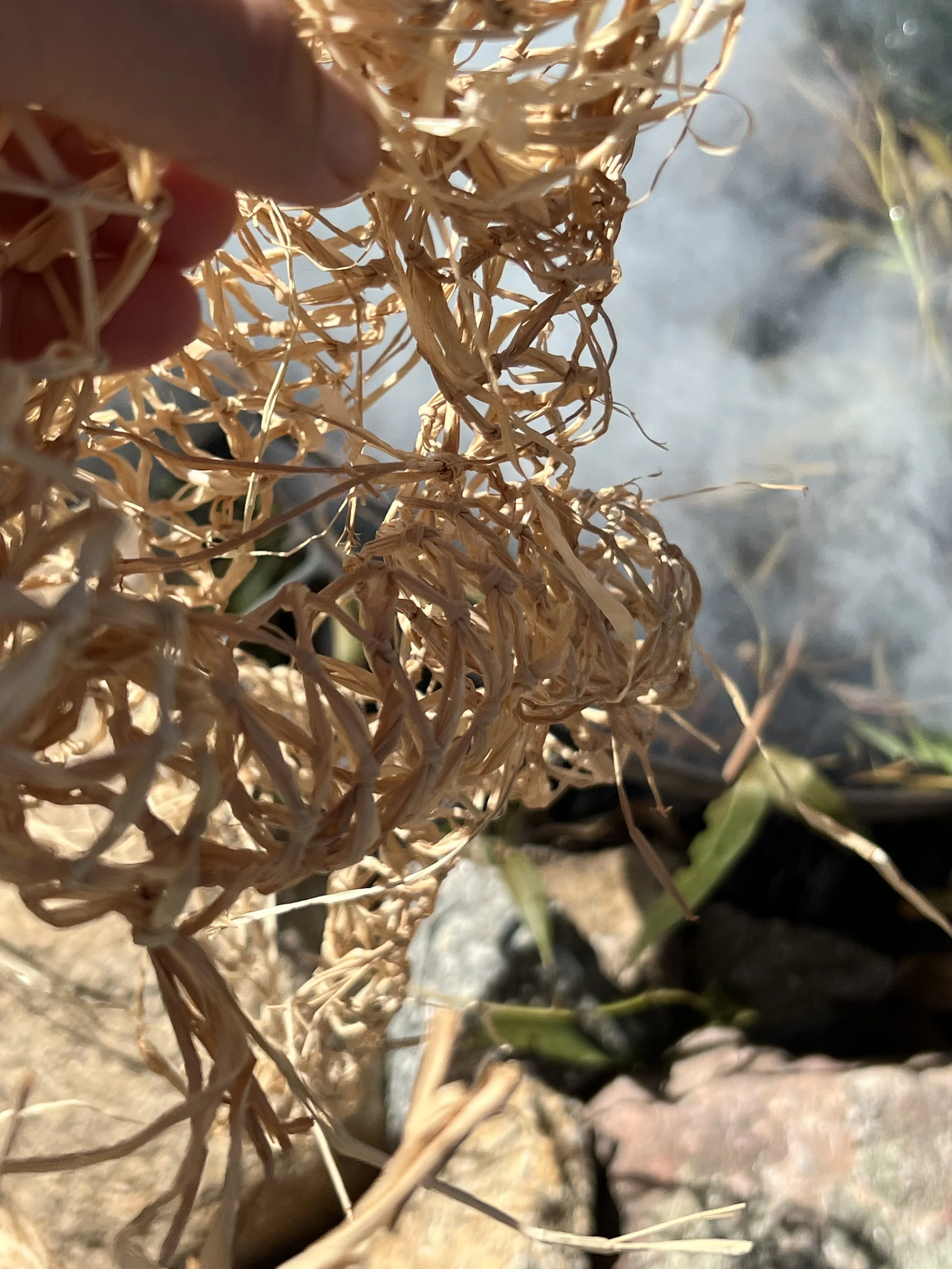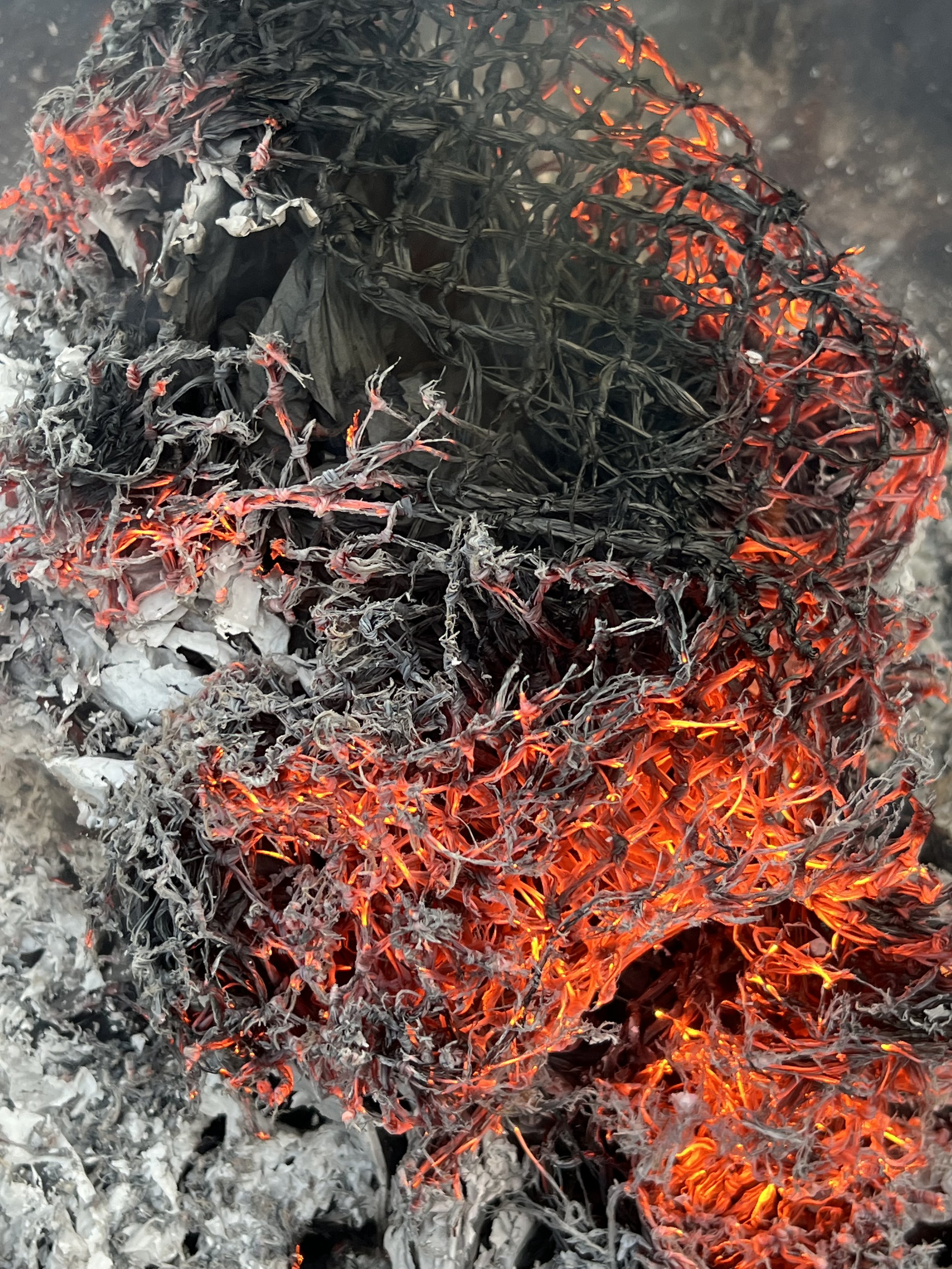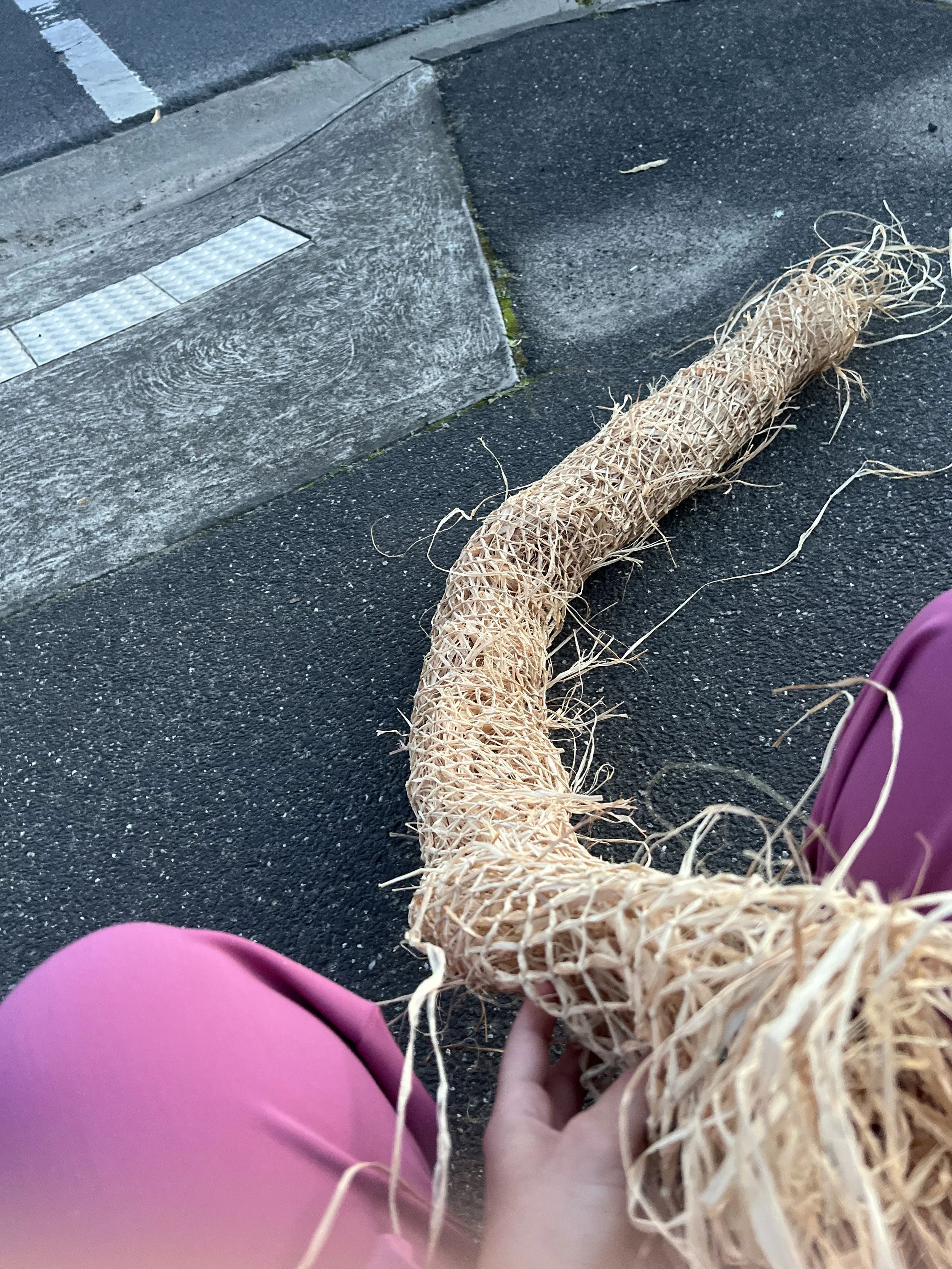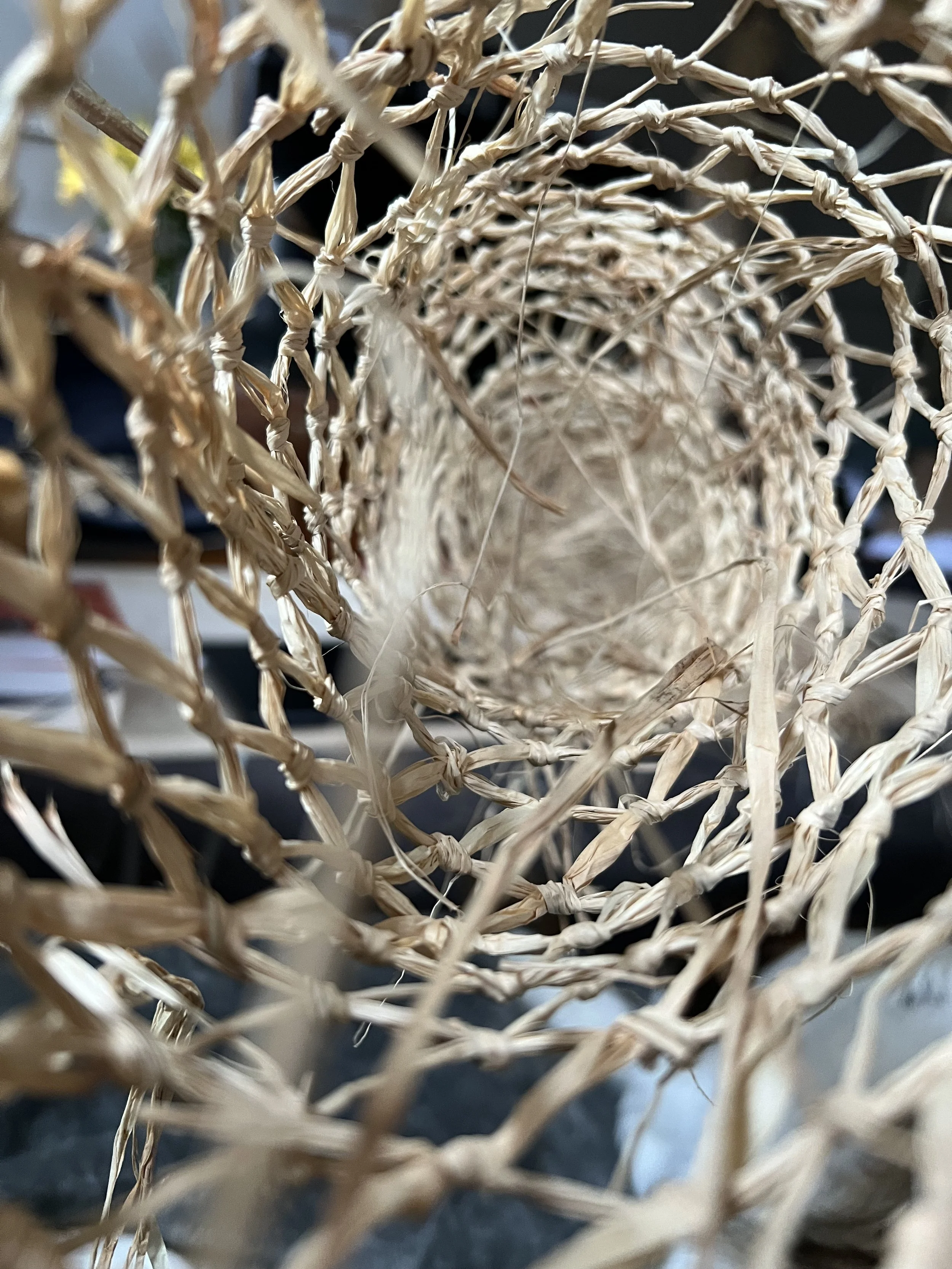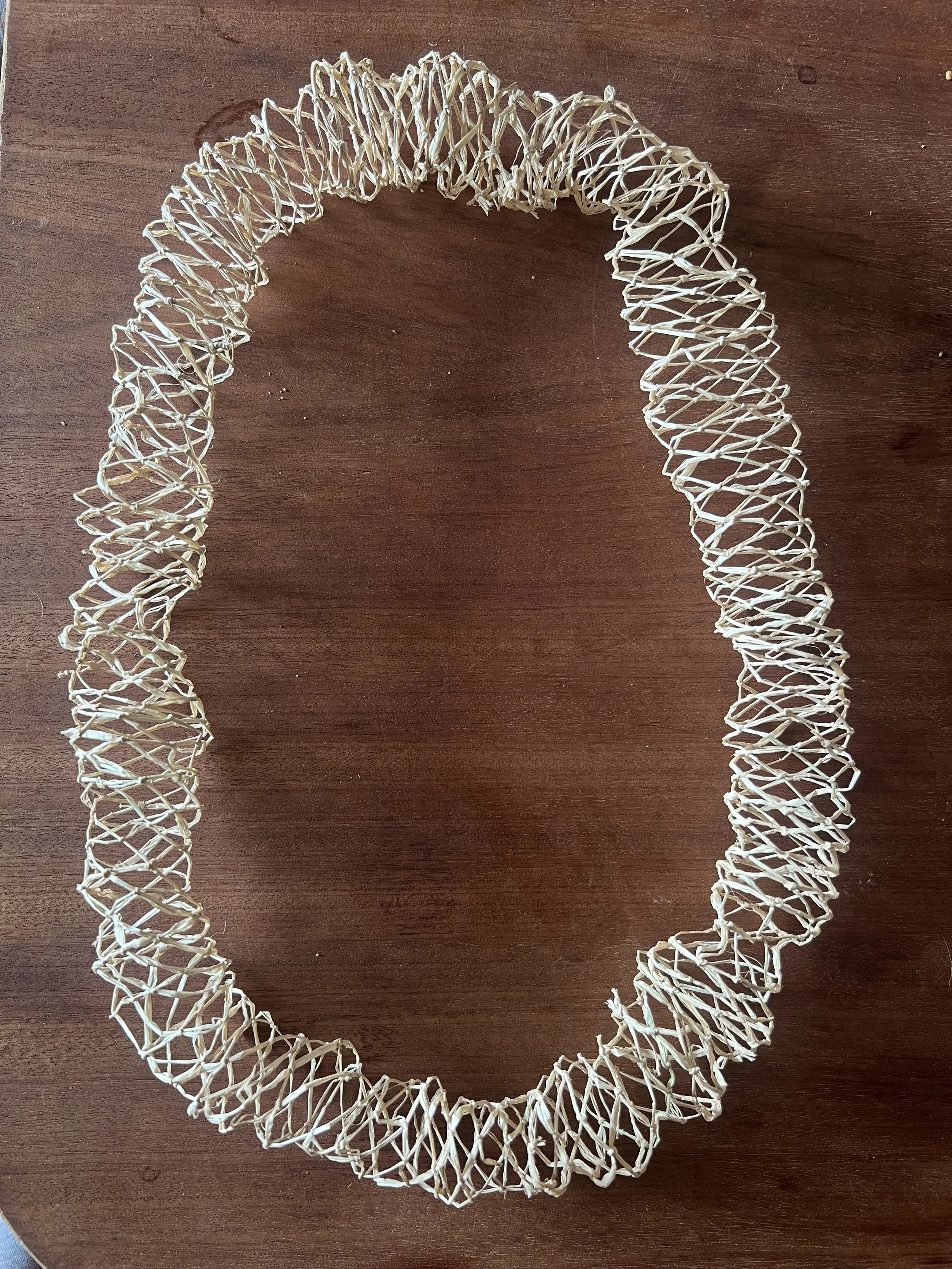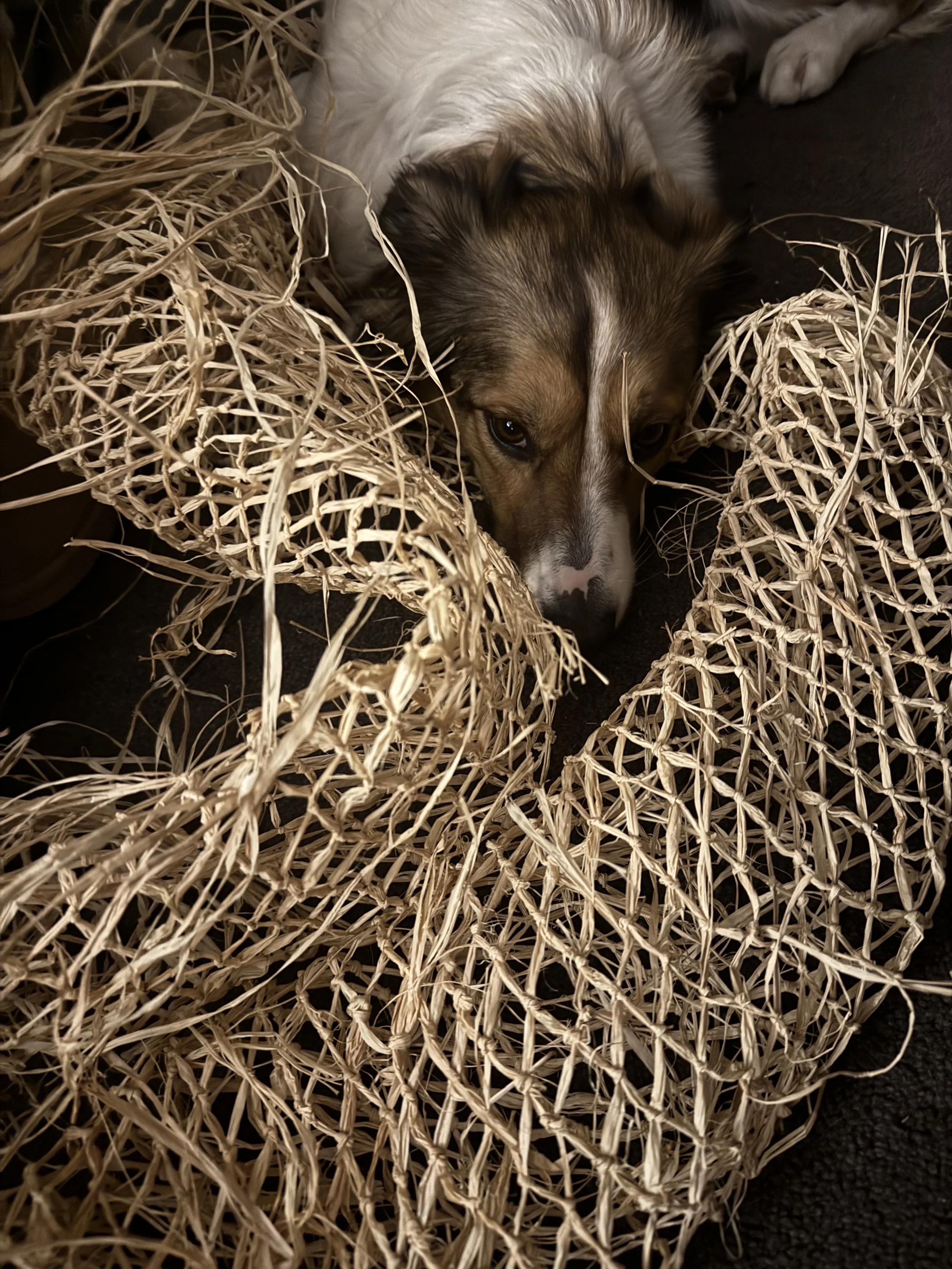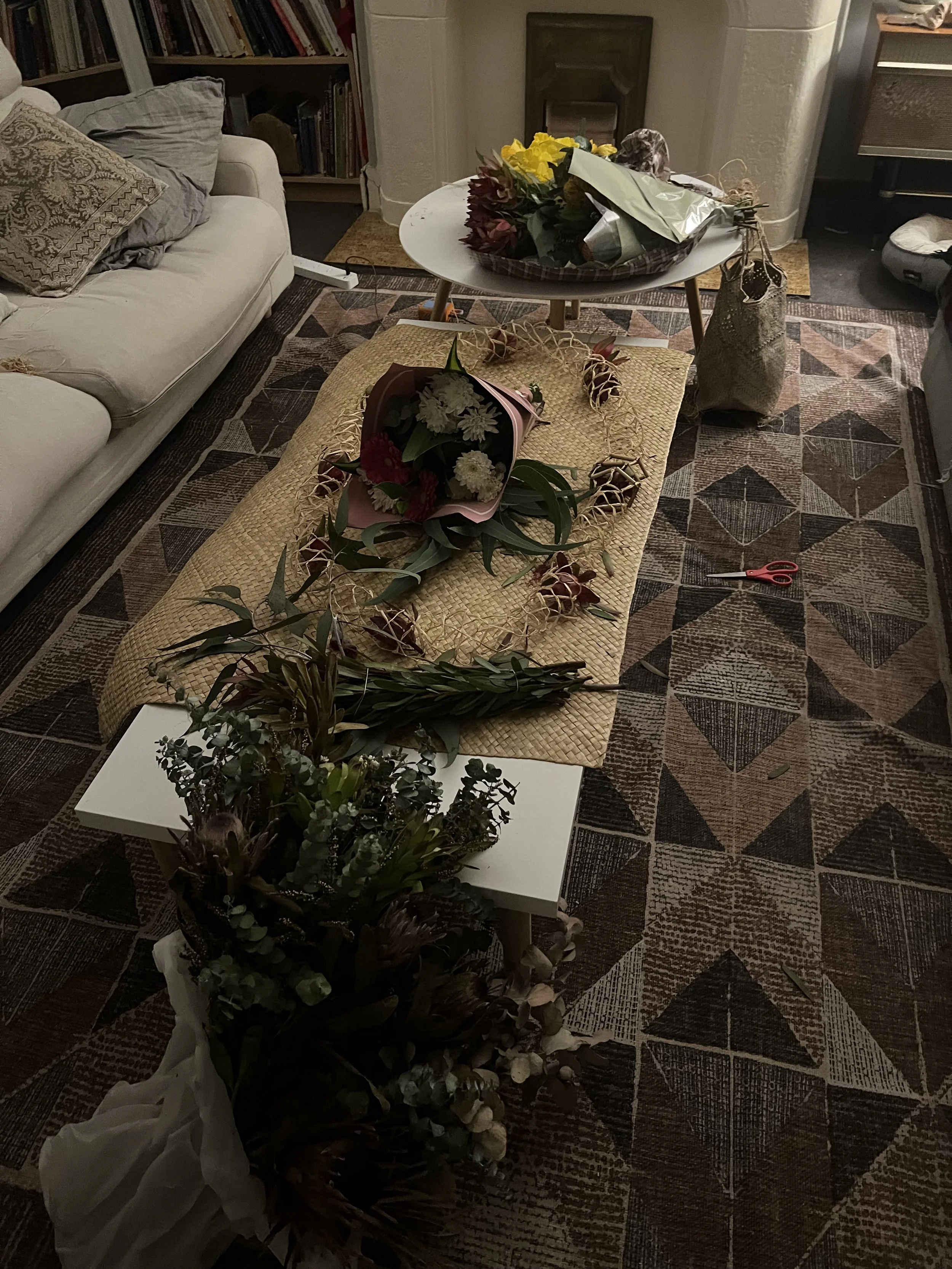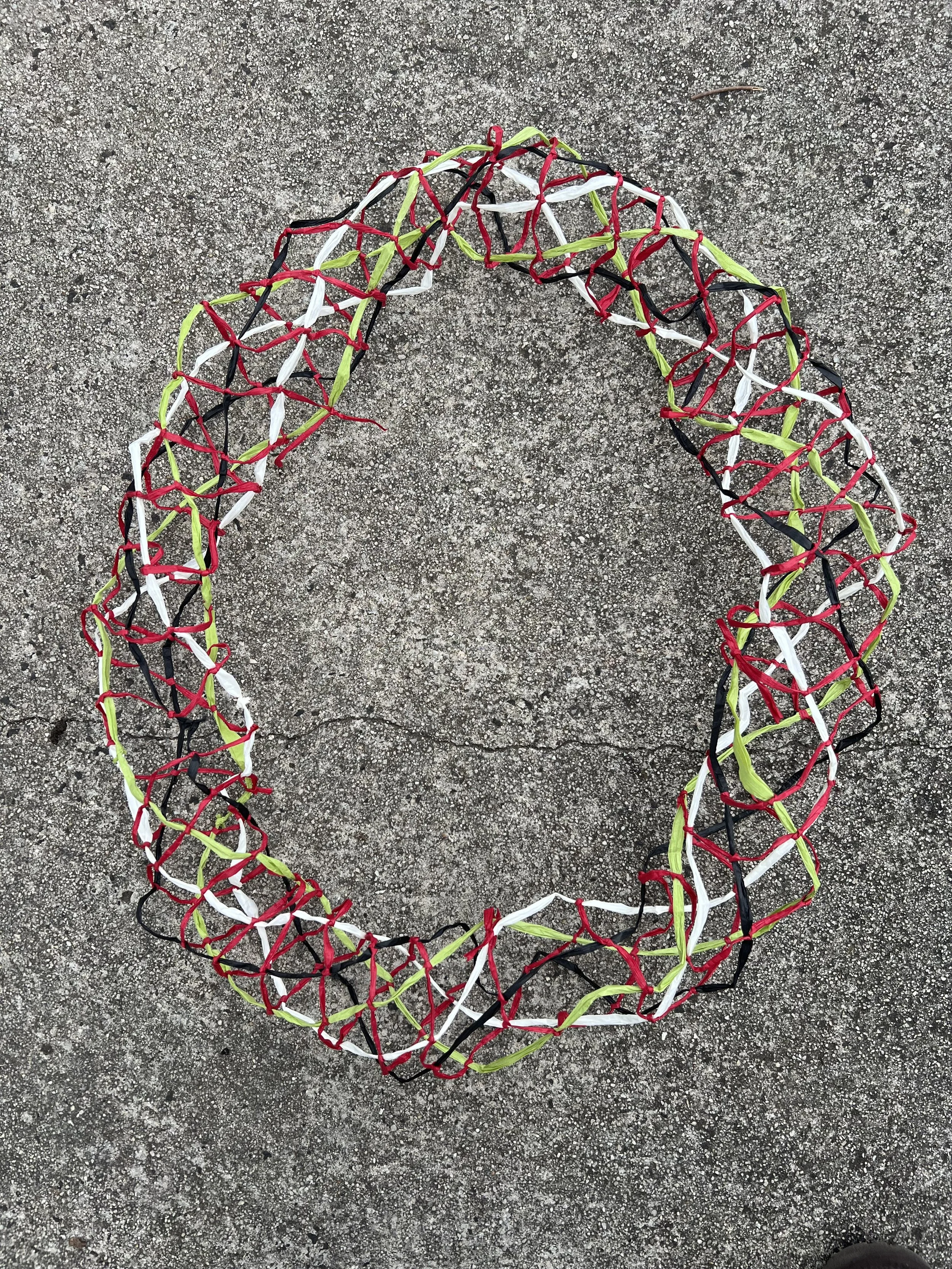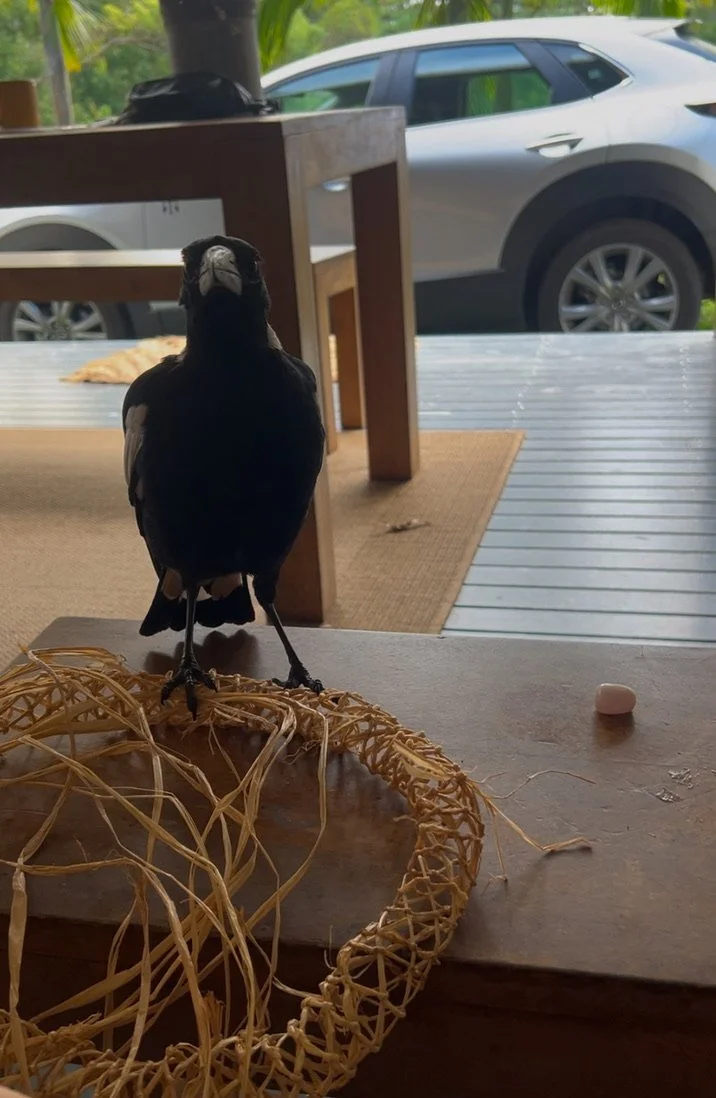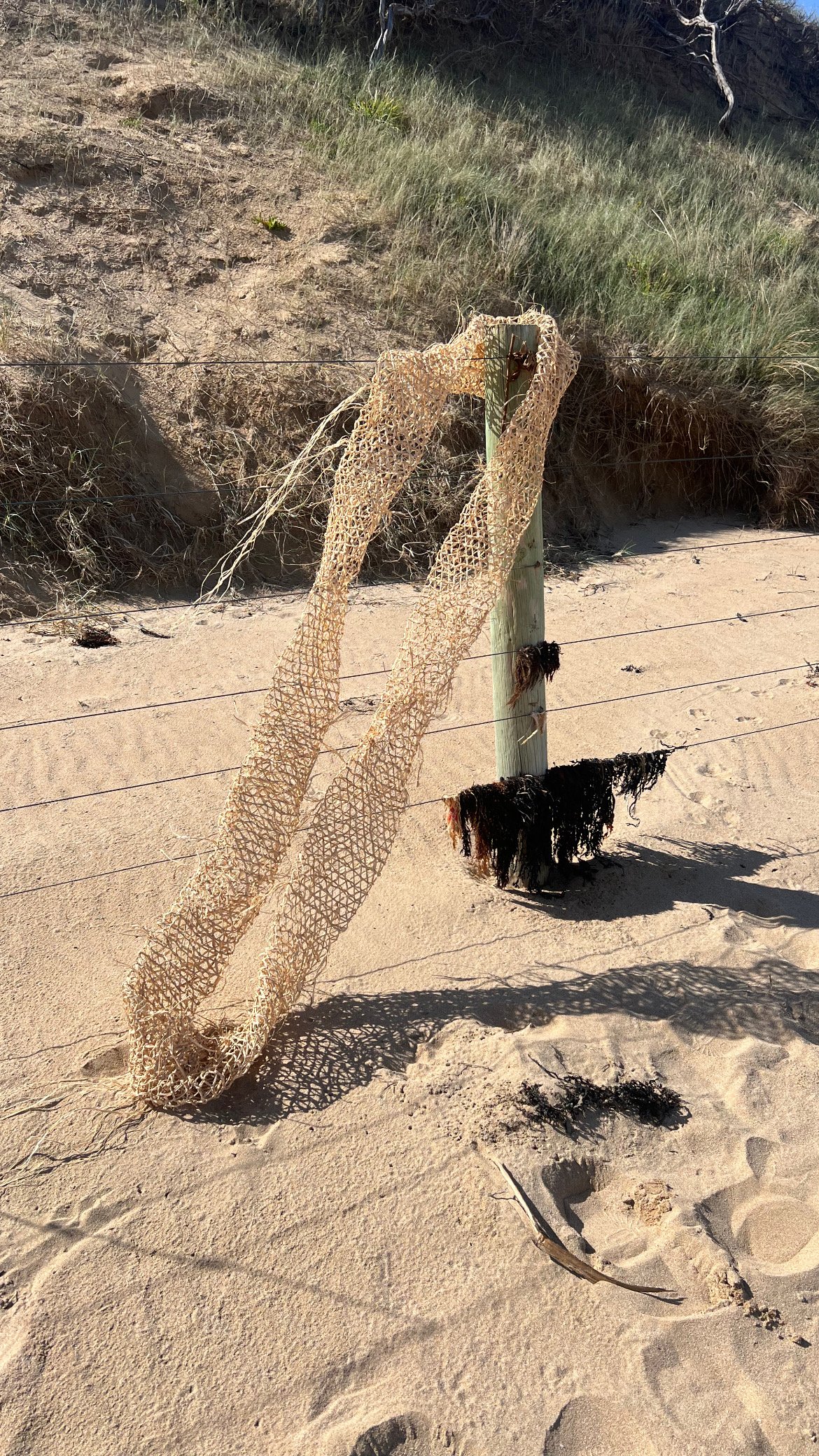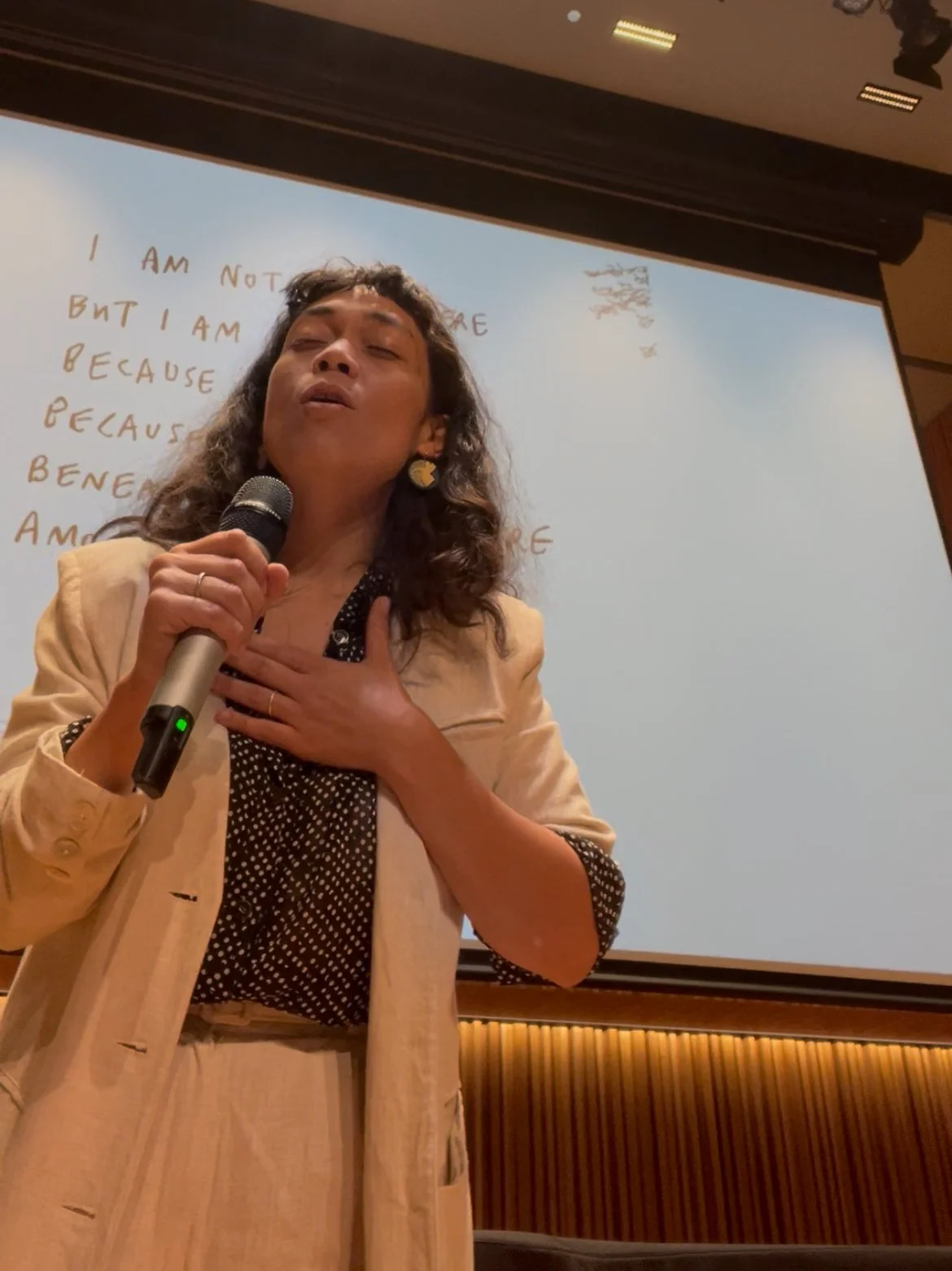CREATIVE WORK
Leah Manaema Avene is a multi-disciplinary artists whose work and research is interested in -
Recovery from colonial fragmentation disorder
Recovery from assimilation
Symbiosis between internal, relational and structural liberation
Working against the imposition of colonial urgency
Repairing relationship with place
Working with Oceanic concepts of va, tapu and mana
Diagnosing institutions and systems, humanising humans
Diasporic Indigenous realities
Kupega
In Tuvaluan, the word for fishing net is kupega - we don’t need to own the whole ocean, we just need to be able to catch what we need when we need it. In Tuvaluan the word for body of knowledge is kupega - we don’t need to own all of the knowledge, we just need to be able to access what we need when we need it.
Kupega is not a traditional weaving style (that I know of). The Kupega weave emerged in relationship with Kulin lands as I was learning and teaching Kulin and Yorta Yorta weaving practices, alongside my mentor. I do not have permission to teach these practices as I they are not part of my story or legacy, leading me to question - what weaving knowledge is mine to pass on?
When I challenged myself to remember how to weave in Tuvaluan, I dreamed the smooth stones on Nanumaga’s beaches, the laughter of my aunties as we shuffled along in a line, weaving pandanus mats. I remember my grandfather’s hands swiftly producing coconut husk string and the quaah quaah quaah sound of his chisel as he carved wood. I let my hands remember as a pattern of knots and helixes emerged growing over time into long knotted tubes and spiraling net-like panels. Kupega is a documentation process and a locating device, a research practice, an interruption to my colonial urgency and domination, a time traveling portal that allows me to be close to myself, close to my home.
I have since developed and used this practice for many practical purposes - to reconnect with my Tuvaluan community, nurture my therapeutic and educational work, support death and dying practices, learn about archiving, research and design and most importantly, I use this practice as a way to repair my relationship with Country and First Peoples.
Making with…
““My Country is not part of your story, you are part of my Country’s story... and what will Country say about what you did here?” ”
“I never write “about” but “from.””
In Tuvalu, our specific patch of land that we belong with and are responsible for is called our malae. An elder told me once that our malae travels under our feet wherever we go. When I am making, I try to feel my malae as the connection between myself and place.
I make with place in a number of ways:
Through sound making, song writing and composing fatele with and for the land, skies, waterways etc..
Through weaving and plant practices
Through research - filling in the gaps of all that has been disappeared through colonisation
Through drawing and making simple marks to communicate and simplify overwhelming ideas
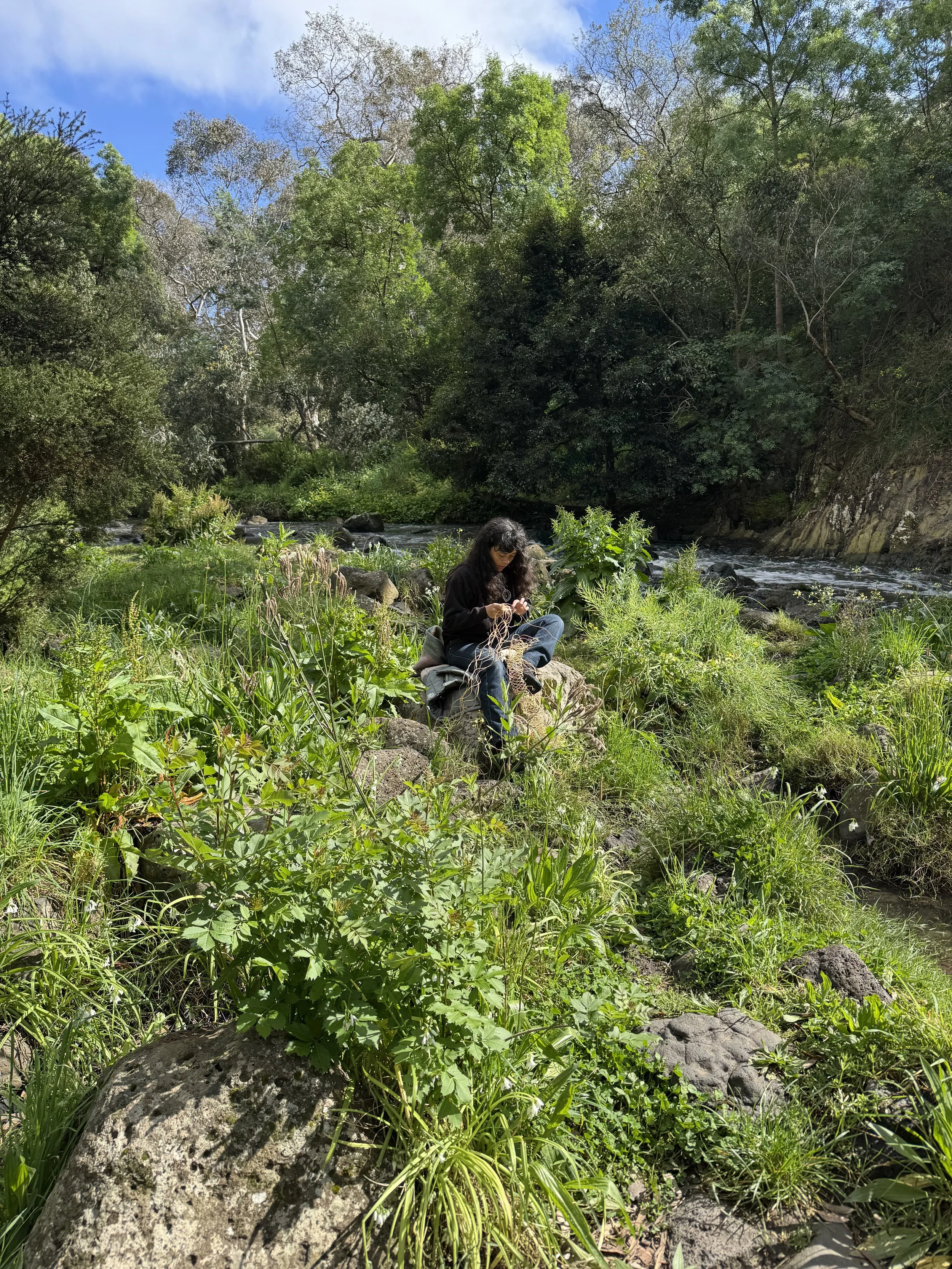
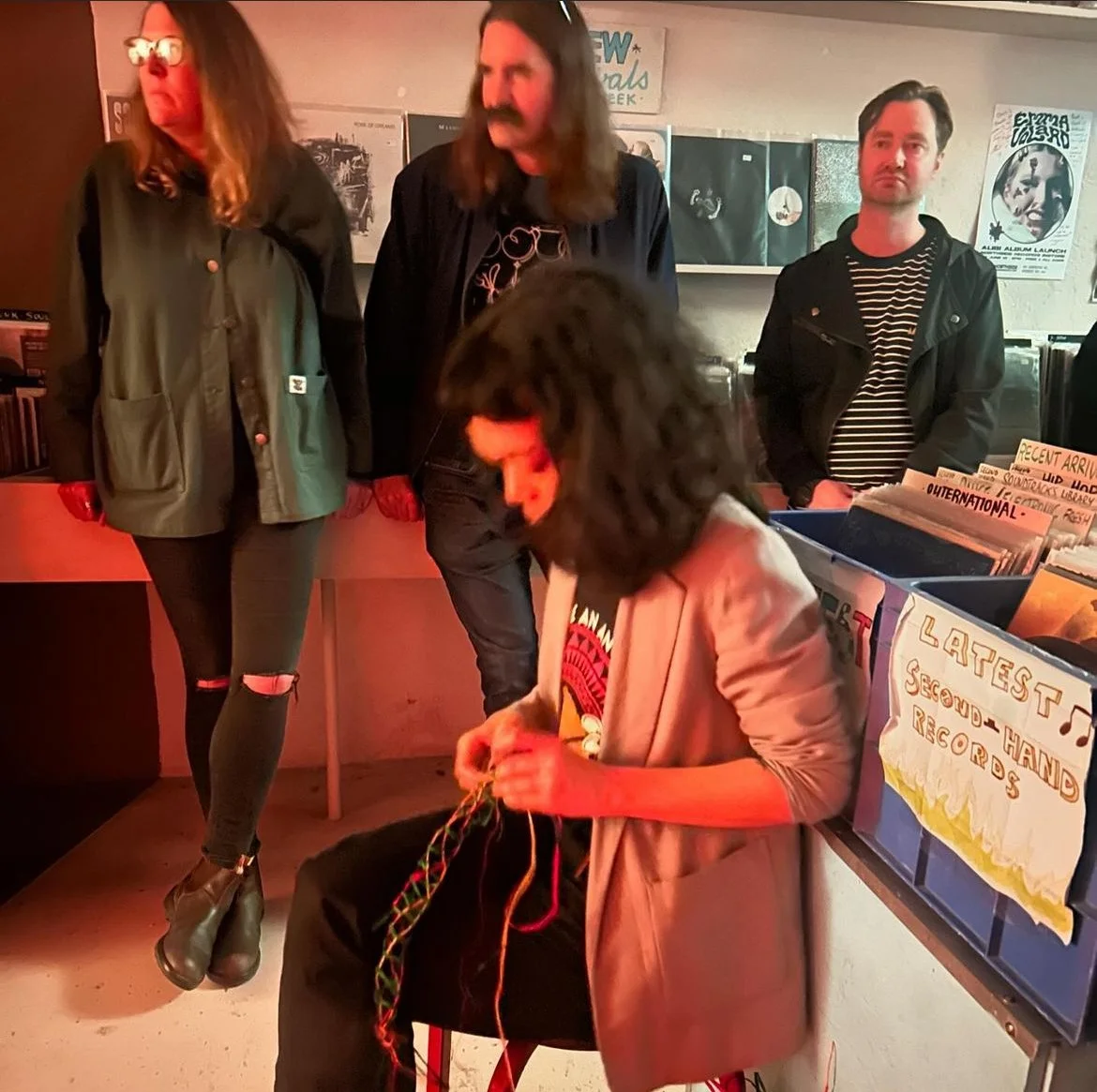
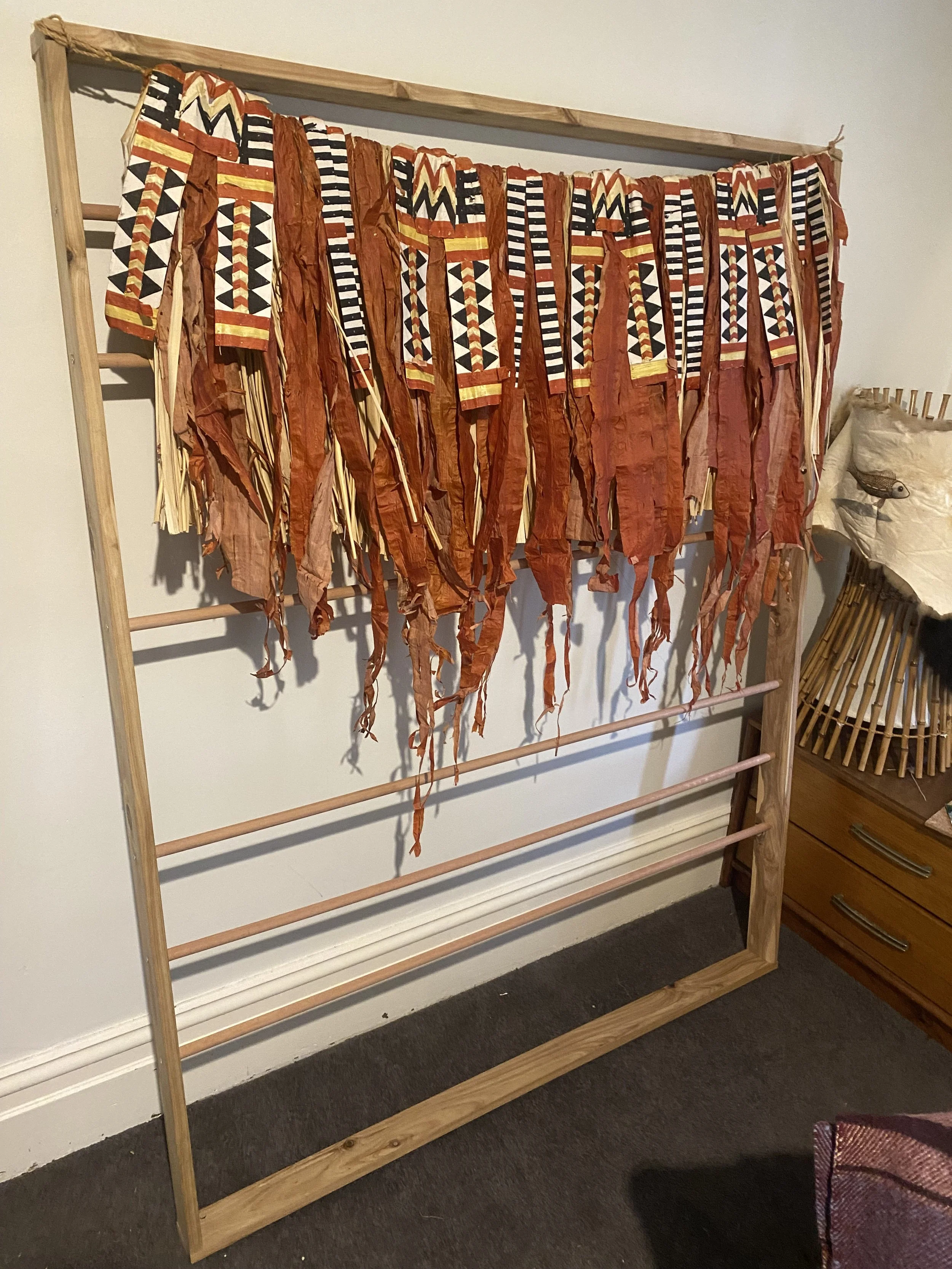

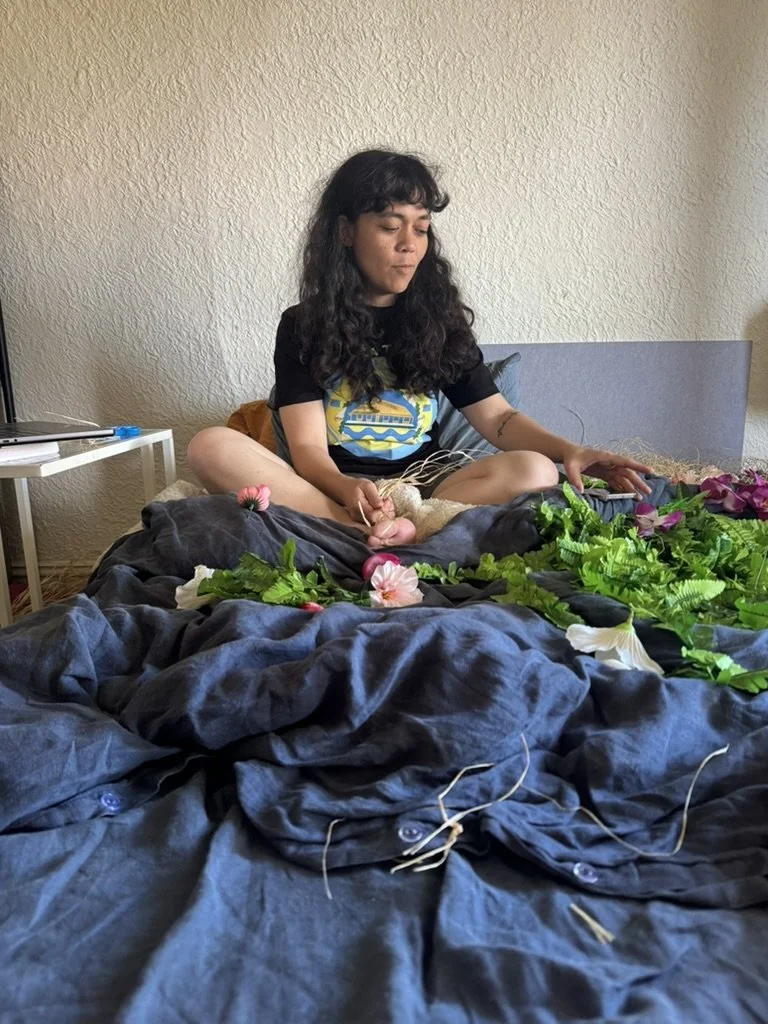

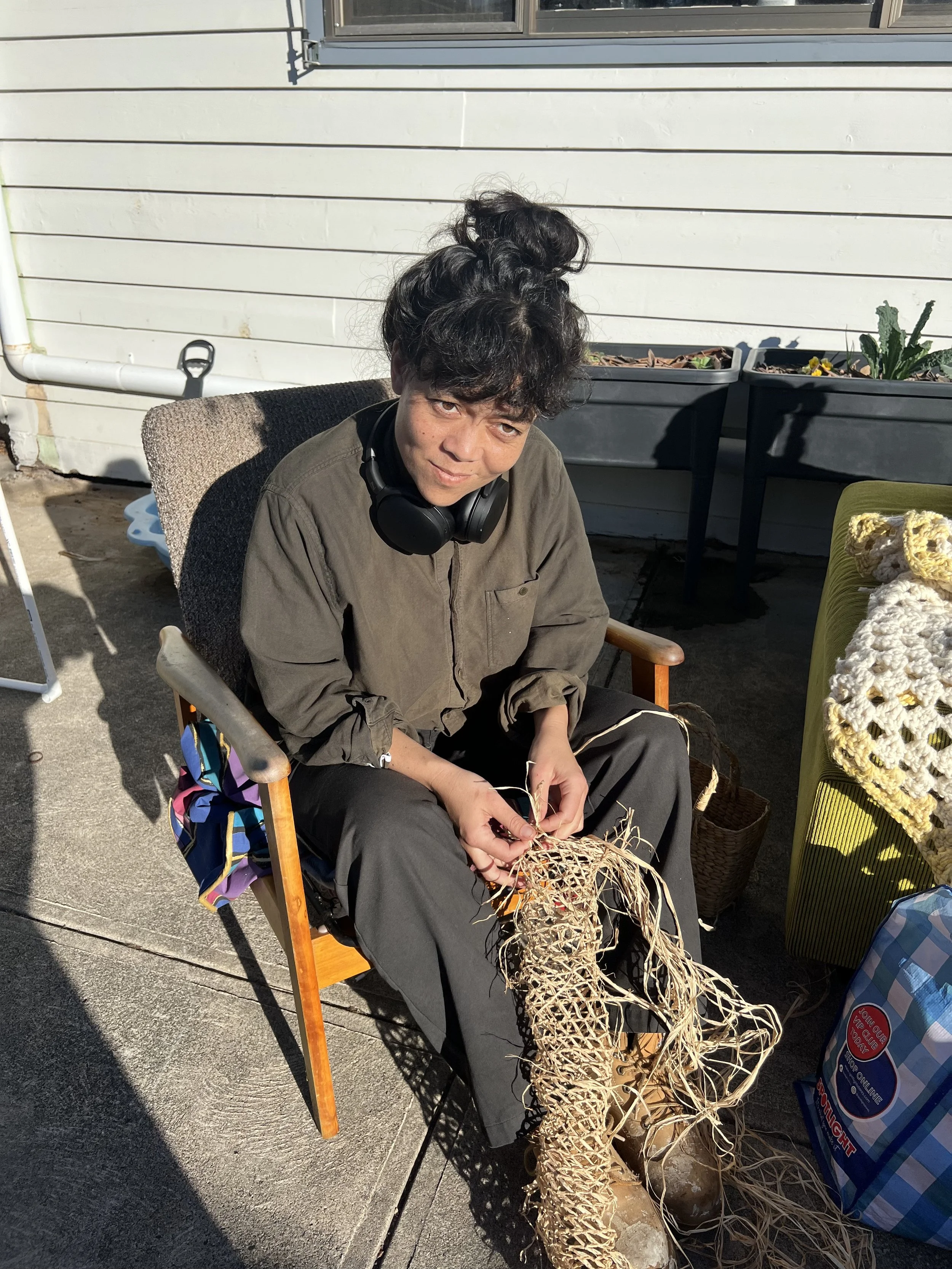



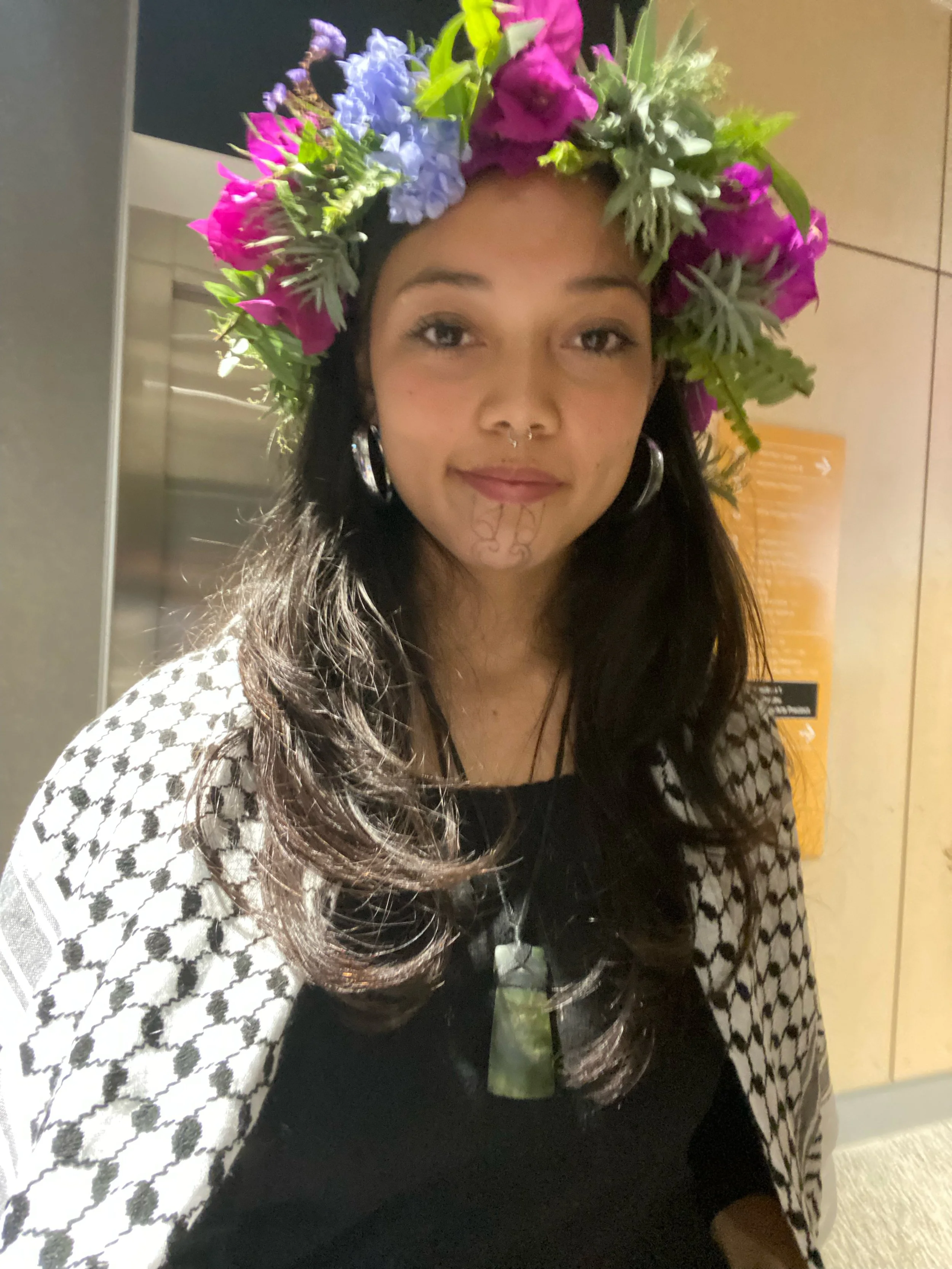

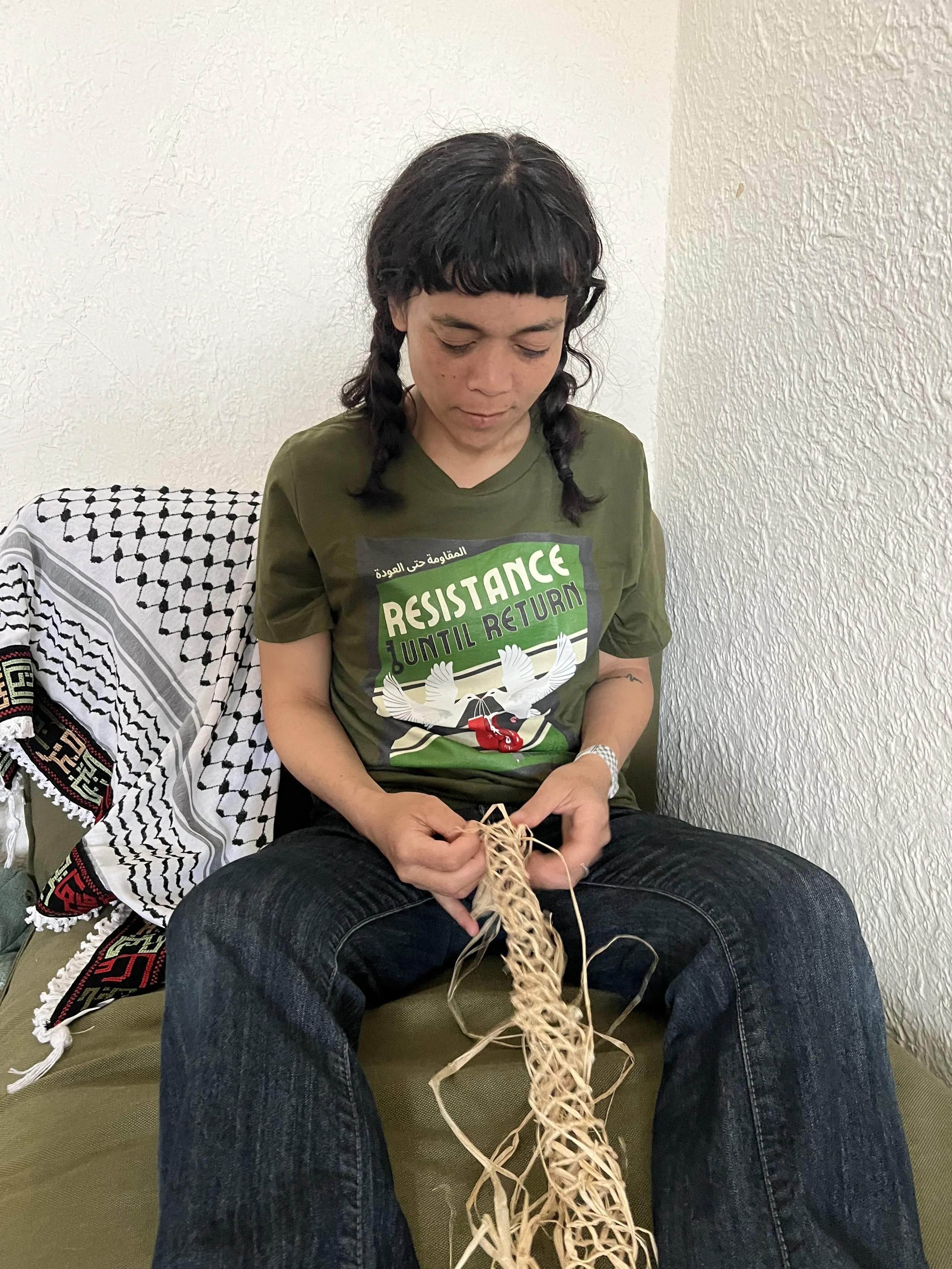
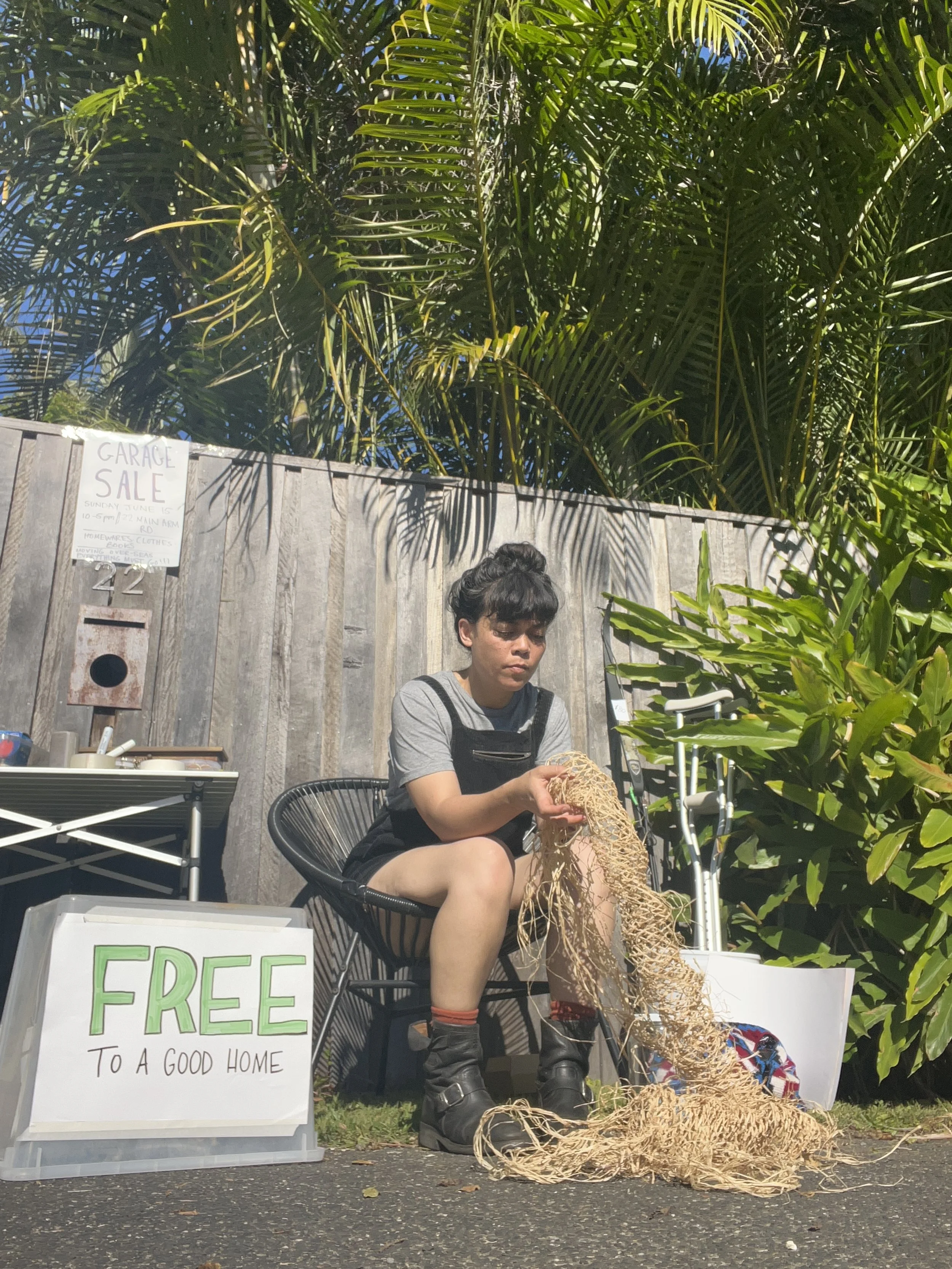

Song & Sound
Sounding with Place
Singing to/with/from waterways
Sounding with place lecture 2024
Singing Our Way Home
Cultural Remembering
Philemon
“Writing”
I ‘write’ by scribbling images and telling stories about them.
I do this as a commitment to oral cultural practice, to mark making, to simplifying overwhleming concepts, to include a whole community, to write the largest amount of truth into the smallest amount of space.. and so on.
My ‘book’ Fieldwork: Collective recovery from Colonial Fragmentation Disorder is read over 8 chapters to groups of people who are wanting to learn, bond and form a community of practice toward land-based liberation.

